Celebrating 150 Years
Celebrating 150 Years St. Luke's University Health Network has grown from the area’s first community hospital to a fully integrated, regional 16 campus Network of more than 23,000 employees that continues to care for the people who live and work in the communities it serves. Nationally recognized for quality, service and patient satisfaction, St. Luke's remains a cornerstone of the community to this day.
One hundred fifty years ago, a star was born!
Founded in the spring of 1872, St. Luke's mission was to provide industrial workers (many from Bethlehem Steel) with local access to health care, eliminating the long journey to New York or Philadelphia for critical treatment. A century and a half later, St. Luke’s continues to honor its commitment to local business and the community – as the Network’s iconic star shines as bright as ever.
Scroll down to explore our timeline
A Legacy of Caring at St. Luke's
Chartered in 1872, St. Luke’s admitted its first patient in 1873. That year, the United States was still recovering from the Civil War, Ulysses S. Grant was entering his second term as president and there were only 37 states. The transcontinental railroad had been completed only 4 years prior and it would be another three years before the Centennial Exposition would announce America’s emergence as a world industrial power.
Reverend Cortlandt Whitehead
Rector of South Bethlehem’s Episcopal Church of the Nativity, Whitehead, meets with leaders of the church-operated Bishop Thorpe School in Fountain Hill to discuss his vision of a small hospital in South Bethlehem. Tinsley Jeter is among those who meet with Rev. Whitehead. Jeter is asked to secure a state legislative charter for the church to establish a hospital.
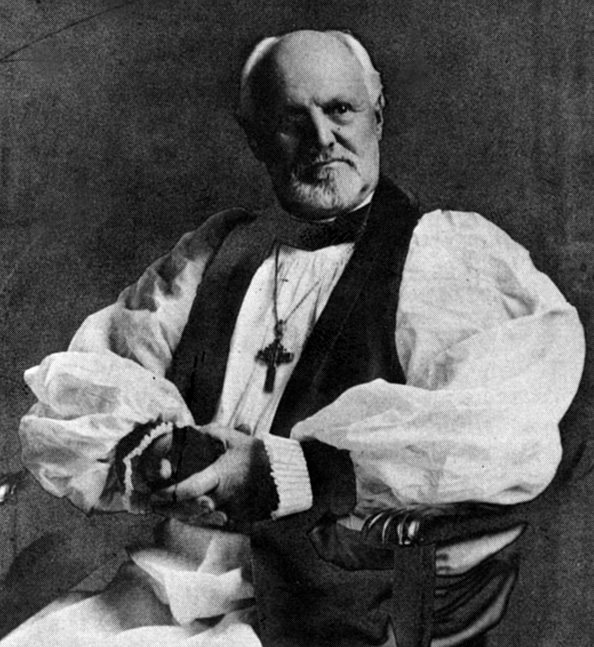
St. Luke's Hospital is chartered
St. Luke’s Hospital is chartered on March 27, 1872, to fulfill the need for a centrally located, well-equipped, and professionally staffed hospital in the Lehigh Valley to care for workers in steel plants such as the Bethlehem Iron Company (later known as Bethlehem Steel), coal mines, explosives factories and cement mills who were frequently injured on the job and required emergency health care.
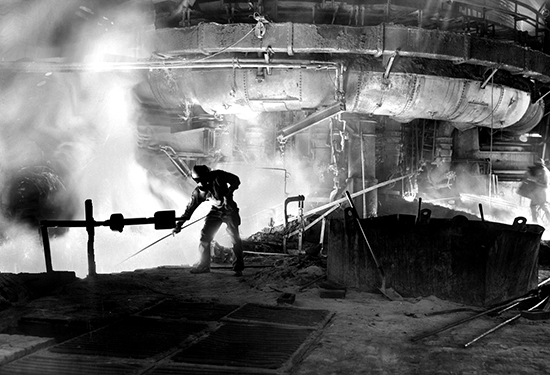
First patient admitted
In south Bethlehem on Carpenter Street (now known as Broadway), builder Abraham Yost was nearly finished with a massive, 20-room residence he planned to put up for sale. Yost offered the property to the hospital for $8,000—a reasonable price even by the standards of the time—and a home for St. Luke’s was secured. On October 17, 1873, the first patient was admitted to St. Luke's Hospital.
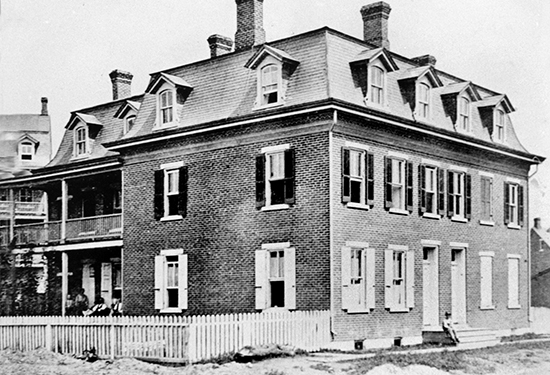
Robert Sayre
An engineer at the age of 16, Robert Sayre served as the vice president and chief engineer of the Lehigh Valley Railroad and later vice president and general manager of Bethlehem Iron Works. In addition to his engineering and business accomplishments, he was also a noted philanthropist supporting the Church of the Nativity and Lehigh University as well as St. Luke's.
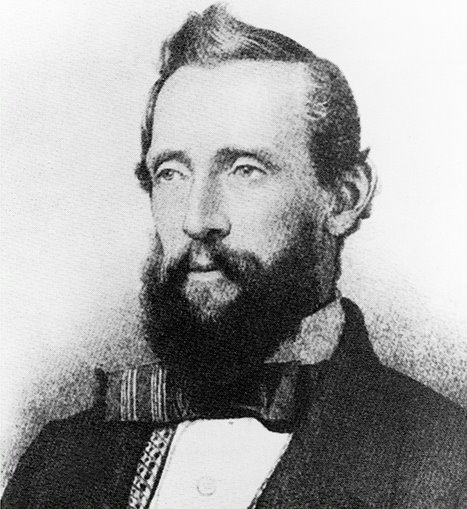
The board relocates the hospital to a larger campus
St. Luke’s outgrows the small building in South Bethlehem they are occupying. The management committee of the hospital buys the scenic Water Cure property in Fountain Hill for $25,000. Asa Packer and his sons donate $10,000 towards the site of the new hospital in 1876.
Dispensary added
As St. Luke’s develops the old wooden three story water cure building into a state-of-the-art hospital, they add a dispensary to the hospital’s operations which provides first aid to nearby injured workers.
Telephone line installed
With the addition of the telephone, St. Luke’s is brought to the cutting edge of communications technology. At this point, the hospital has been in operation for six years and has treated 800 patients with 92% of patients being discharged, cured, or in better condition than when admitted. St. Luke’s tradition of providing quality health care is well underway.
Asa Packer
Upon his death, Packer leaves $300,000 in Lehigh Valley Railroad stock to the hospital. With this new fortune, the trustees develop a plan for the future of St. Luke’s—to design and build an extensive medical campus that would employ pavilion architecture used in more advanced hospitals in Great Britain.
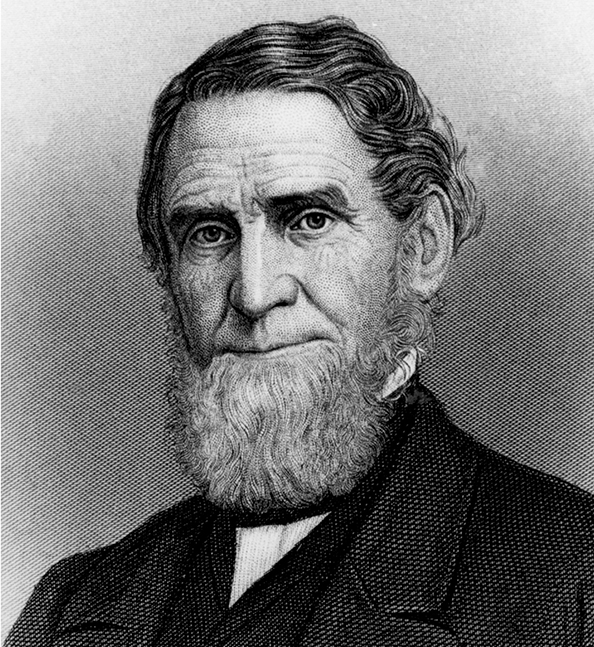
Dr. William Estes, Sr.
Dr. William Estes, Sr. Dr. Estes’ arrival marks the metamorphosis of St. Luke’s from an emergency treatment center to a general hospital. In 1881, he is appointed the first superintendent and surgeon-in-chief due to his training at Mt. Sinai and his innovative methods of sanitary practice using antiseptics during surgery.
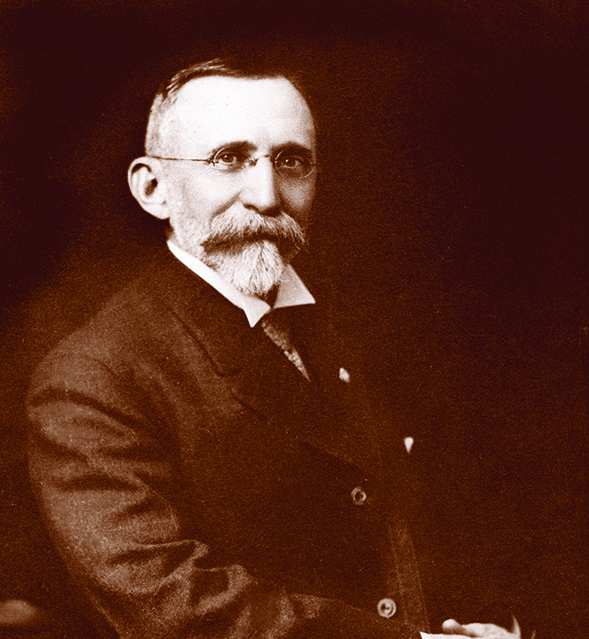
Training School for Nurses introduced
St. Luke’s is the fourth hospital in the country to operate such a school. Nine pupils form the first class.
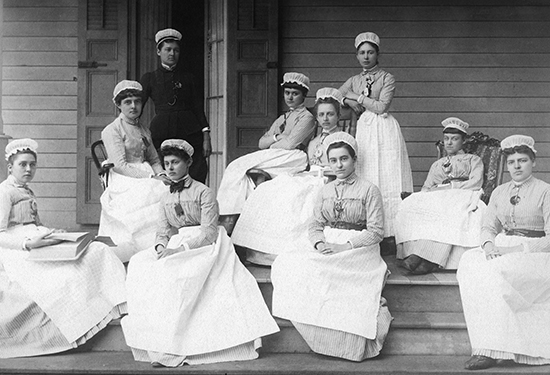
Annie L. Lockhard Memorial Pavilion for women opens
This pavilion has a 12-bed general ward, six private rooms, an examination room, and a solarium. St. Luke’s now extends all the benefits of full-service hospital care to female patients and caters to their unique needs.
Uniform First Aid Kit Created for Locomotives
Following his appointment in 1882 as Chief Surgeon of the Lehigh Valley Railroad, Dr. William Estes, Sr. organized the medical service that was provided to workers on the Lehigh Valley Railroad. He devised a uniform first aid kit to be carried on locomotives and cabooses of every freight train. This kit proved so popular that they were also used by Bethlehem Iron employees and railroads across the country.
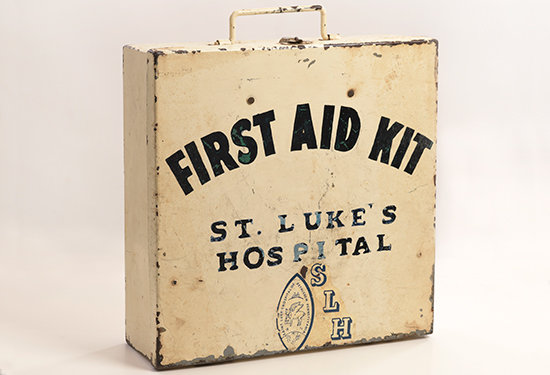
First horse and buggy ambulance purchased
The horse-drawn ambulance shelters patients with a hard roof and the suspension system reduces injury during transportation.
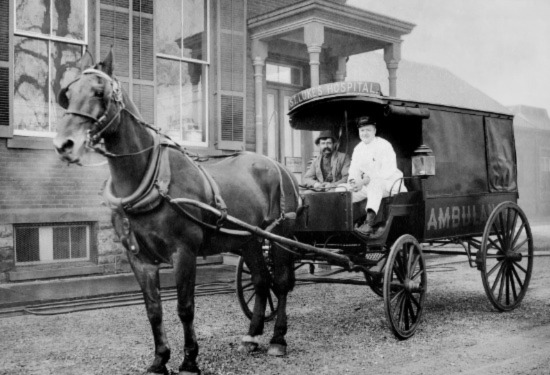
Children's Ward opens
Further developing its role as an all-purpose hospital, St. Luke’s adds a children’s ward and an administration building. St. Luke’s now has accommodations for 60 patients.
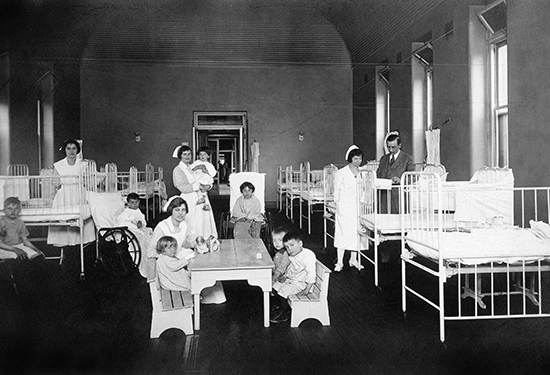
Miss Victoria White
The first director of nurses, Miss White, was appointed as the superintendent of the hospital.
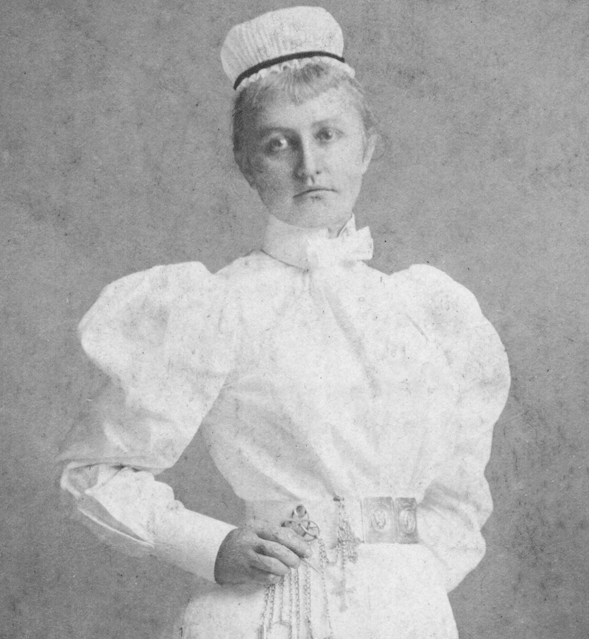
Electrical power added
St. Luke’s enters the century of progress by installing electrical power that greatly enhances patients’ comfort and care. Through the support and generous donations from the community, St. Luke’s continues to add more facilities and beds to its campus.
A New Century
With Estes’ unique management, advanced practices and focus on education, St. Luke’s entered the 20th century near the forefront of American hospitals.
Robert Sayre Pavilion for the poor opens
Commissioned by charter trustee, Robert Sayre, the pavilion contains 12 beds for “charity cases” and an additional five rooms for other patients. This further defines St. Luke’s role as a compassionate community hospital. Sayre dedicates the building “to commemorate those who, by contributions of their labor and means, have aided in making St. Luke’s Hospital helpful to the unfortunate.”
First radiologist hired
This occurred just 13 years after the accidental discovery of the X-ray by German mechanical engineer and physicist Wilhelm Conrad Röntgen. Today, most people will undergo at least one medical imaging study in their lifetime, showing the tremendous impact radiology has had on public health.
William H. Chandler Pathology Lab established
St. Luke’s continues to expand itself technologically as well as physically. The biology and pathology lab which has been operating in the basement of the apothecary building for several years is moved to its own pavilion. Its equipment rivals that of any medical school or major-city hospital in the country.
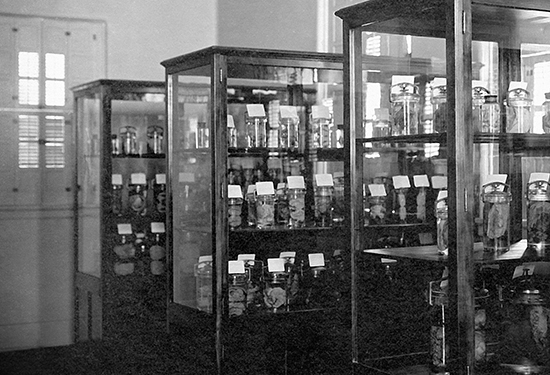
X-rays are used as a tool for diagnosis
Radiologists begin using X-ray technology shortly after the invention of the X-ray tube in 1913. St. Luke’s is among the first hospitals in the country to have facilities for radiology.
Coxe Pavilion opens as an obstetrics ward
The Coxe Pavilion at St. Luke’s Hospital opens as a modern obstetrical ward that convinces many women to have their babies in the hospital instead of at home. Upon the death of Eckley B. Coxe, his wife and son authorized the building of this pavilion at their expense.
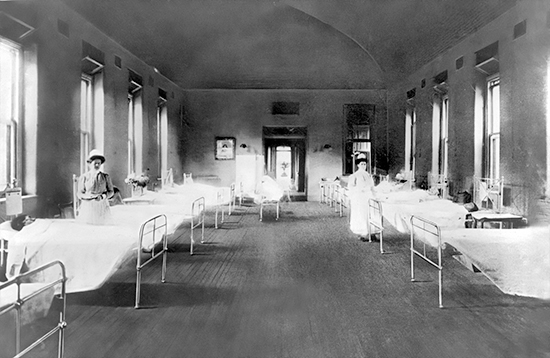
Bethlehem Steel Pavilion is built
Donations from Bethlehem Steel support the hospital that treats scores of accident victims from their mills. Bethlehem Steel is one of St. Luke’s greatest benefactors in the 20th century.
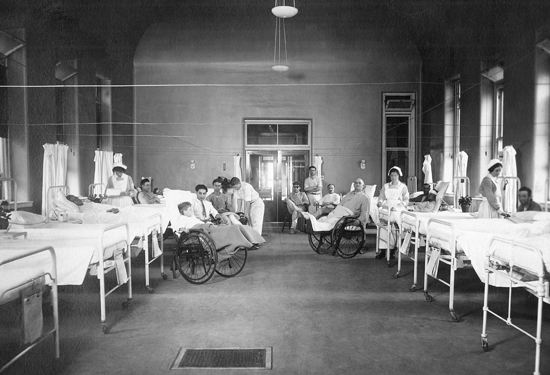
A motorized ambulance is added
This addition to the fleet greatly increases the speed at which people receive medical care.
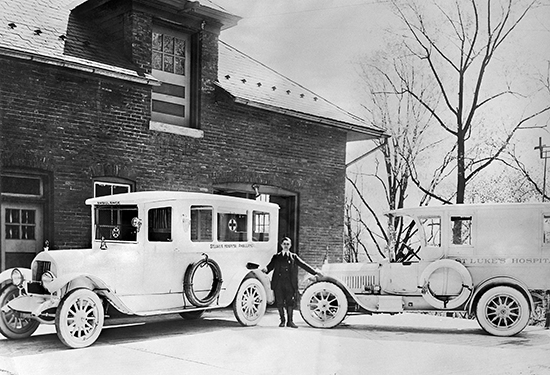
Visiting Nurse Association (VNA) of St. Luke's is established
The Visiting Nurse Association (VNA) of Bethlehem is formed from The Baby Welfare Association which provided mothers of newborn babies with pasteurized milk and childcare advice. The two agencies shared a car and offices at Second and Polk Streets.
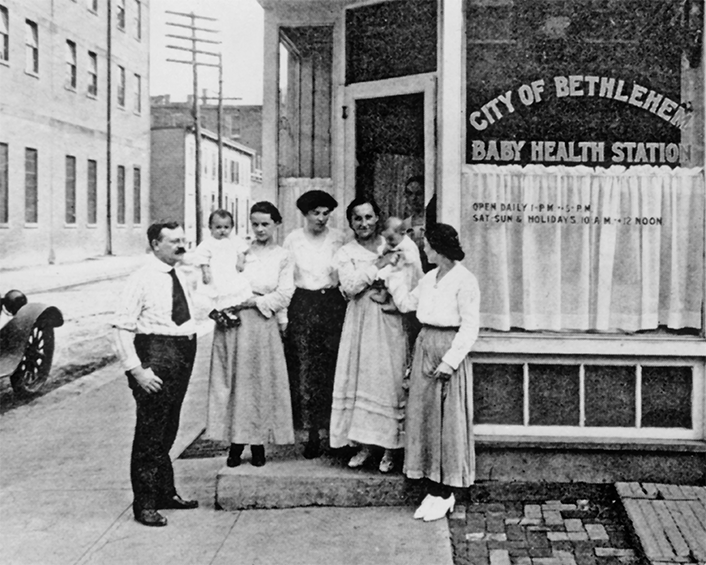
Dr. William Estes, Sr. retires
After 39 years as the guiding force of St. Luke’s Hospital, Dr. Estes retires. During his tenure, St. Luke’s had grown from 24 beds to more than 200, had joined the ranks of the nation’s most advanced hospitals and had treated tens of thousands of Lehigh Valley citizens.
Celebrating 50 years
During its first 50 years, St. Luke’s has treated 49,448 cases in its wards and rooms, and 42,042 cases in its dispensary (emergency room).
Years of Growth and Challenge
The 1920s brought a decade of great economic growth for the entire nation, including the Lehigh Valley. Despite a number of management changes during this time of expansion, St. Luke’s medical operations remain strong.
Dr. William L. Estes, Jr
William Estes, Jr. was born and raised in Bethlehem. He graduated from Moravian Parochial School, Lehigh University (1905), Johns Hopkins Medical School (1909), was a resident in surgery at the Mayo Clinic (1909-1912). He was a respected surgeon in Bethlehem and in 1931, the son of the first superintendent, takes over as Chief Surgeon of St. Luke’s Hospital. He would retire in 1949. His dedication and leadership of the medical staff during his years as chief surgeon were credited by many in the community with keeping St. Luke’s a thriving force.
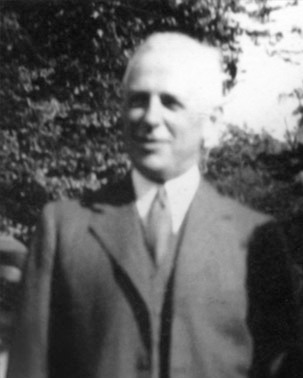
New Nursing School Building
St. Luke’s purchases the old Bishopthorpe School for $50,000 and renovated it to become the new nursing school building.
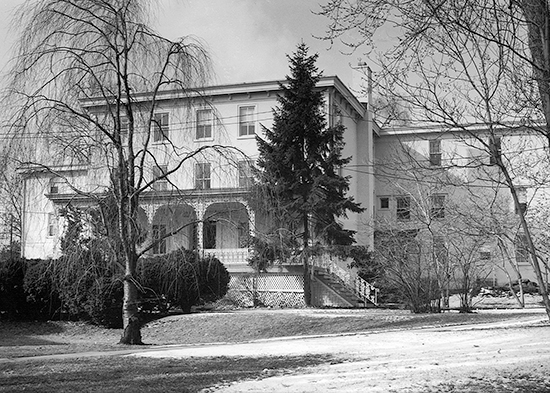
Walker Surgery Building opens
Dr. William Estes Sr. returns to St. Luke’s to be part of the dedication of the 4,200 square-foot air-conditioned Walker Surgery Building. Dr. Estes also performs the first surgery in the new building and is given the title Surgeon Emeritus.
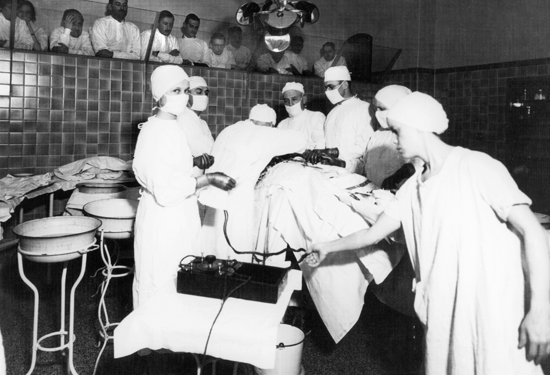
New ambulance purchased
A new ambulance replaced the one that had been used for 15 years. The hospital itself was brought into modern times with a number of renovations for better public access, including the paving of Ostrum Street.
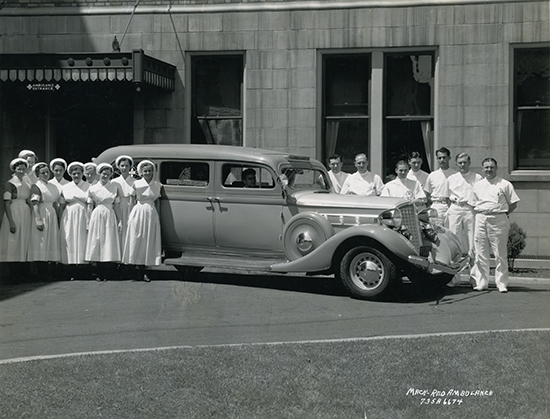
St. Luke's becomes a participant in the Hospital Plan of the Lehigh Valley
It was so popular that the next year the hospital is visibly overcrowded. This plan later becomes known as Blue Cross.
Construction of the four-story East Wing begins
With overcrowding becoming an issue, Bethlehem Steel once again responds with $200,000 toward the construction of the four-story East Wing, which would be built on the site of the original women’s ward. This represented a change in the traditional pavilion-style architecture of the St. Luke’s buildings. The first four floors were constructed in 1941.
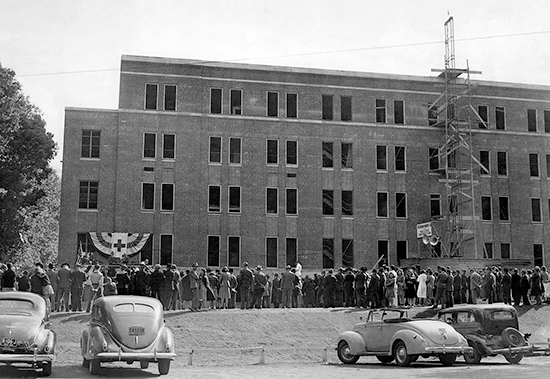
St. Luke's School of Nursing became an accredited facility
Under the United States Cadet Nurse Corps program, the school of nursing has trained 146 cadet nurses for military services.
Construction begins on the North Wing
Bethlehem Steel donates $800,000 towards the construction of another new wing, the North wing.
St. Luke’s Takes Care of Its Employees
In the post war years, St. Luke’s began considering better ways to take care of its employees so they institute a 44-hour work week and adopt a pension plan, an investment program very similar to the 401 (k) plans of today.
William Estes, Jr. Retires
His dedication and leadership of the medical staff during his years as chief surgeon were credited by many in the community with keeping St. Luke’s a thriving force.
St. Luke’s Becomes the Center of Polio Care in Eastern Pennsylvania
St. Luke’s capabilities become further taxed during a national polio epidemic. St. Luke’s Becomes the Center of Polio Care in Eastern Pennsylvania when it established a treatment facility in the Coxe Ward.
St. Luke’s Comes of Age
During the post-World War II era, St. Luke’s, once a vanguard hospital, suddenly finds itself behind the times for the new levels of service that are required with the rapid advances in technology. By the time St. Luke’s celebrates its centennial in 1973, the Lehigh Valley’s first hospital was also one of the most advanced, well-staffed and fastest-growing.
Public fundraising drive held to improve hospital
In order to meet the community’s increased need for health care services and for the first time in its 80-year history, St. Luke’s Hospital Board of Trustees conducts a public fundraising drive to bring the hospital to more current standards. The campaign exceeds its goal by $1 million. The hospital receives $1.25 million from the federal government and an additional $205,000 from the Ford Foundation.
Cardiac Catheterization Unit installed
St. Luke’s installs the first heart catheterization unit in the Lehigh Valley made possible by a donation from Bethlehem Steel.
Nightingale Lamp presentation
The St. Luke’s School of Nursing alumni association is presented with The Florence Nightingale Lamp. Florence Nightingale is known as "the lady with the lamp" because she made her rounds by the light of the lamp she carried.
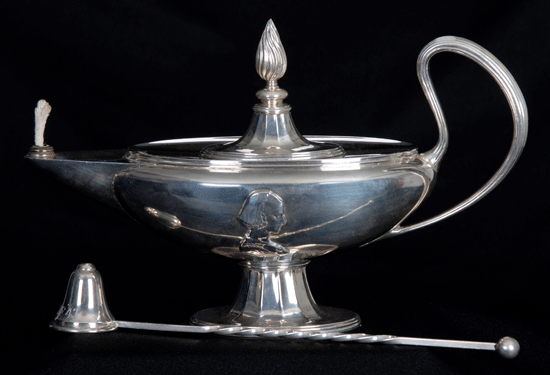
First Medical Education Director named
Dr. William Estes, Jr. is named first Medical Education Director of the hospital. Once again the Estes name would be synonymous with St. Luke’s and enhance the hospital’s national reputation.
Building Program completed
At a cost of $5.5 million, every facility at St. Luke’s had been renovated and/or expanded and the hospital, which was overcrowded less than 20 years before, now had a total of 510 beds, staffed by 105 physicians. The North Wing, the hospital’s most prominent feature, now rose eight stories.
Cadillac Eureka ambulance is purchased
St. Luke’s state-of-the-art ambulance is purchased for $12,500 and offers safety improvements and better heating and cooling over previous models. The ambulance is staffed by medical interns and provides mobile health care in emergency situations.
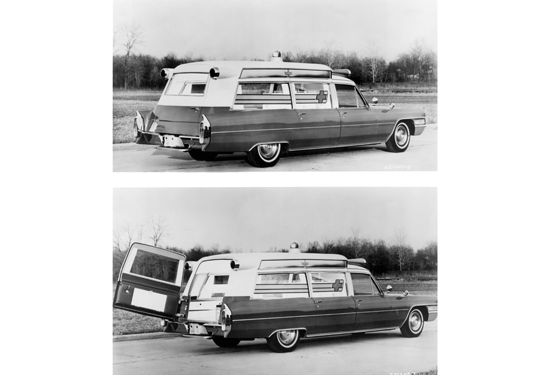
The introduction of disposable needles and syringes
St. Luke's is an early adopter of the use of disposable syringes, needles, and other 'disposable' items as they gain wide popularity in hospital practice. These items ensure sterility and prevent the spread of infection from patient to patient.
A full-time emergency medical staff is created
The traditional staffing of the emergency department with interns and residents is replaced with a full-time emergency medical staff.
The first pre-deposit blood donor system is instituted
Members of the United Steelworkers of America Union at Bethlehem Steel are among the first donors. Some 5,000 members give enough blood to meet the needs of nearly 20,000 patients.
Intensive care unit opens
This 12-bed unit contains the most current electronic equipment available providing 24-hour care to serious and critical patients. Another example of St. Luke’s at the forefront of medical treatment.
First artificial hip replacement is performed
The need for new methods to reduce pain and improve functional quality of life for patients is so widespread that specialists at advanced medical centers are exploring the first modern means of replacing hip joints. During the total hip procedure, the surgeon removes the damaged sections of hip joint and replaces diseased portions with an artificial joint.
St. Luke’s introduces family-centered obstetrics
While many hospitals are closing their obstetrical services, St. Luke’s is using a different approach. Instead of prohibiting fathers from being present for labor and delivery, the hospital now invites them to be part of the experience.
Dedication of the Centennial Wing
St. Luke’s holds a dedication of the new five-story Centennial Wing. As St. Luke’s continued to expand, the mission of serving the community with complete dedication never wavered.
Laparoscopic procedures introduced
A major medical development using a technique that is much less intrusive than traditional surgery due to its small incisions, allowing for shorter hospital stays, and is ideal for outpatient surgery. This plays an important role in the maturation of St. Luke’s as a regional, tertiary hospital.
St. Luke’s celebrates its Centennial
St. Luke’s completes its first century of service. By this time, the Lehigh Valley’s first hospital was also one of its most advanced, well-staffed and fastest-growing.
The Second Century of Care
When St. Luke’s Administrator Richard Suck referred to a door being opened to a new century, it was unlikely that anyone could have anticipated the wide-reaching changes that would occur in the Lehigh Valley and in the health care industry during the next 25 years.
First vascular laboratory in the Lehigh Valley
St. Luke’s opens the first vascular laboratory in the Lehigh Valley. It is one of the first vascular laboratories in the United States, Canada, and Puerto Rico to be granted accreditation by the Intersocietal Commission for the Accreditation of Vascular Laboratories.
Priscilla Payne Hurd
The first woman to chair the board of trustees, Mrs. Hurd had provided generous financial support, as well as sound leadership, wisdom and vision for the hospital and its educational programs. Elected to the Board of Trustees on June 28, 1982, Mrs. Hurd becomes chairman in 1991, a position she holds through 1995.
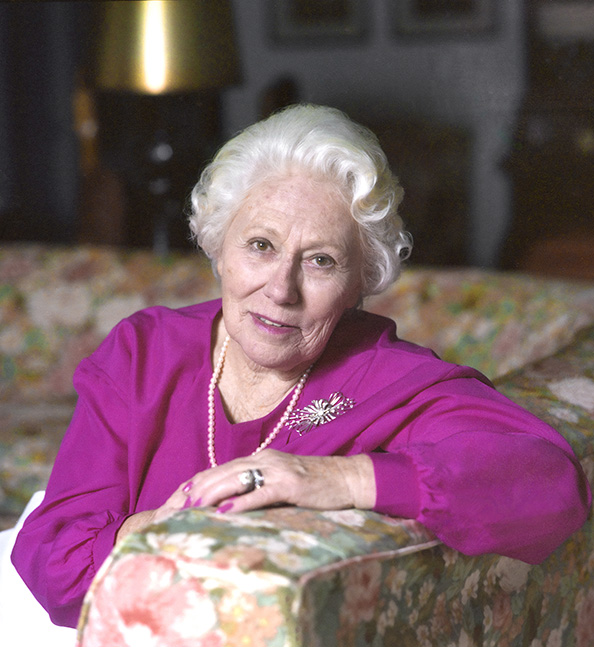
First open-heart surgery performed
On June 10, 1983, Dr. Terrill Theman performed the first open-heart surgery at St. Luke’s. “I was more nervous than the patient,” recalls Dr. Theman of the successful triple bypass surgery.
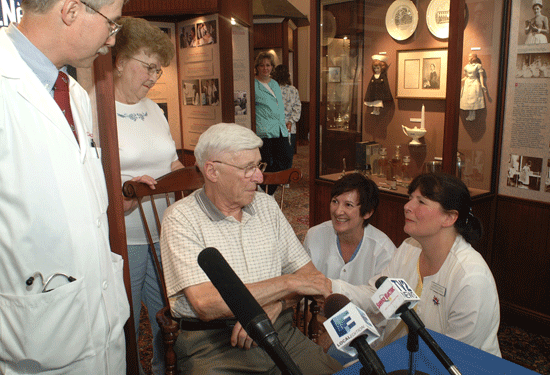
Laser eye surgery center opens
St. Luke’s opened the first laser eye surgery center in the area. Since then, the use of lasers has been expanded to other surgical areas such as urology, gynecology, plastic surgery and neurology.
Richard A. Anderson
Named Chief Operating Officer and shortly thereafter, President and CEO. Anderson soon became a change agent for the hospital and remains one today. During his first year as CEO, there were but 36 medical staff specialties, the hospital had an operating budget of about $71,000,000 and the residency training programs were in jeopardy. Twelve years later, the number of medical specialties had grown to 57, the operating budget was in excess of $186,000,000 and the medical education program had been completely revitalized.
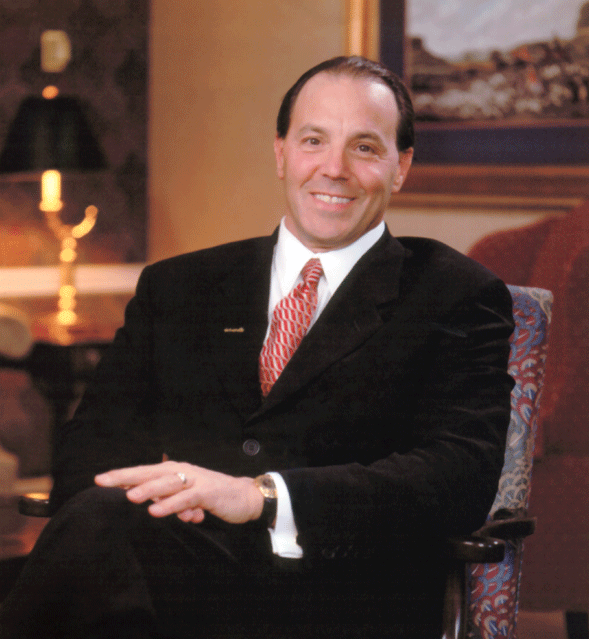
In vitro fertilization (IVF) program established
IVF brings the challenge of infertility into public conversation and changes millions of lives around the world. This journey is perceived as a miracle in the 20th century and is still delivering remarkable results.
St. Luke's Hospice formed
Four patients and a small team of interdisciplinary professionals provide comfort care to the terminally ill in the community, being the start of St. Luke’s Hospice. Thirty years and thousands of patients later, St. Luke’s Hospice is a leader in providing extraordinary end-of-life care to the patients and families in the communities it serves.
Breast Care Center opens
The first mammography unit specifically for women’s health opens with a focus on a teaching approach with more patient information about self-exams. Ultrasounds are added, followed by needle biopsies.
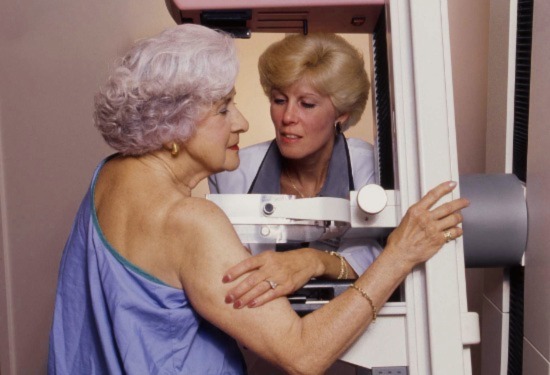
St. Luke’s defends tax-exempt status in Lehigh County
St. Luke’s fought a challenge to its tax-exempt status and won on merit. Unlike other area hospitals, St. Luke's did not agree to make payments or provide services in lieu of taxes.
First MRI facility opens
This 6,800 sq. ft. MRI facility enables physicians to see inside the human body in new ways. In addition, a nephrology unit, cardiac recovery unit and renovated Centennial Wing 4 opens. These new facilities increase the hospital’s capacity.
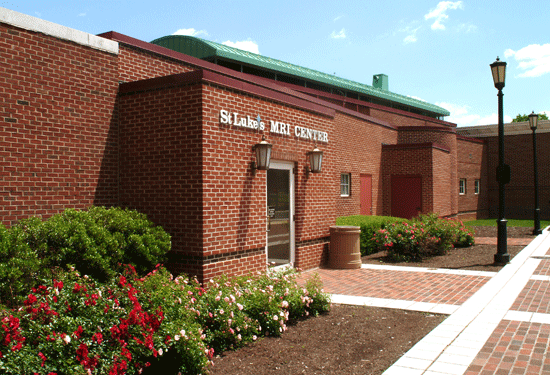
Among the first hospitals in the U.S. to perform stereotactic breast biopsy
This is a diagnostic examination of the breast using X-ray and computer coordinates to precisely guide a hollow needle to a breast lesion and take a small sample of tissue. St. Luke’s remains the regional leader in this procedure.
Rotoblator® is first used
St. Luke’s is the first in the Lehigh Valley to use a Rotoblator® which is a small flexible catheter with a diamond burr that removes plaque from heart vessels that blocks coronary arteries.
The Priscilla Payne Hurd Education Center is dedicated
The 36,000 sq. ft. building includes 11 classrooms, a 100-seat and 70-seat auditorium and a nursing arts laboratory. Stones from some of the original hospital pavilions were included in the foundation of the structure which was designed to resemble the hospital’s original pavilion architecture.
The South Wing is completed
The 10-story, 230,000 sq ft South Wing is the most extensive building project in St. Luke's history and takes three years to complete. The building, which is connected to the existing hospital, includes more than 230 single patient rooms in seven patient care units.
Quakertown Community Hospital joins St. Luke's
The 89-bed acute care hospital in Upper Bucks County was acquired. President & CEO, Richard A. Anderson, at the time described the new relationship as a “win win” for everyone involved.
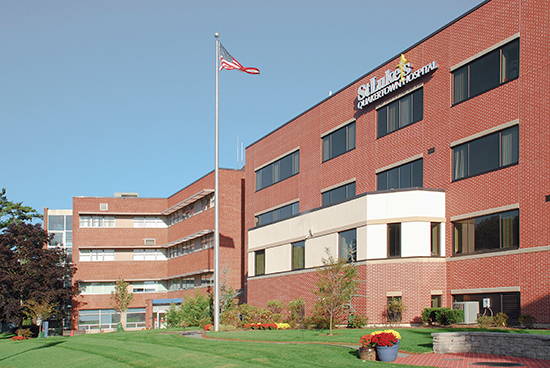
Affiliation agreement reached with St. Christopher's Hospital for Children in Philadelphia
Families from the Lehigh Valley no longer need to travel to Philadelphia to benefit from the expertise of pediatric specialists that up to this point had only been available in major urban medical centers.
Mother/Baby Unit opens
The new state-of-the-art Mother/Baby Unit opens at St. Luke’s Hospital continuing to show the dedication to the patients they care for and to the improvement in health outcomes for mothers and babies.
Bethlehem Partnership for a Healthy Community established
This partnership sponsored by St. Luke’s Hospital, Northampton County and the Colonial Northampton Intermediate Unit 20 was created to formulate ideas and strategies to deal with issues that affect health and quality of life. Some of which included poverty, housing, violence, education and employment.
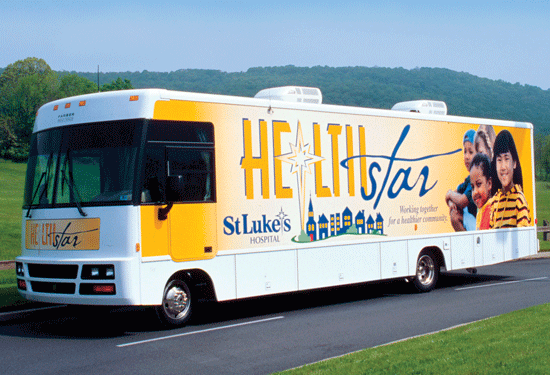
Allentown Osteopathic Medical Center joins St. Luke’s
The 113-bed hospital was renamed St. Luke’s Hospital - Allentown Campus and would operate as a division of St. Luke’s Hospital. St. Luke’s became a single hospital operating under one license at two sites.
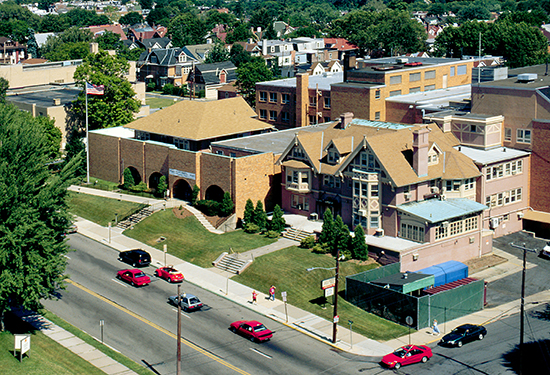
St. Luke’s forms strategic partnership with the Hospital of the University of Pennsylvania
A strategic partnership was announced with one of the nation’s top-ranked hospitals- the Hospital of the University of Pennsylvania (HUP) and its University of Pennsylvania Health System in Philadelphia. The two organizations agreed to initial areas of cooperation in cancer, trauma and medical education.
St. Luke's Hospital and Health Network is created
With its expansions and acquisitions comprising 750 licensed beds, St. Luke's is a major health care force in Eastern Pennsylvania.
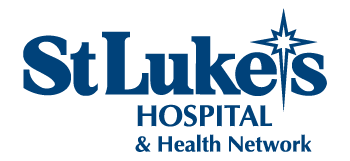
Designated as Level I Trauma Center
St. Luke's is now capable of providing total care for every aspect of injury – from prevention through rehabilitation – earning its Level I Trauma Center status.
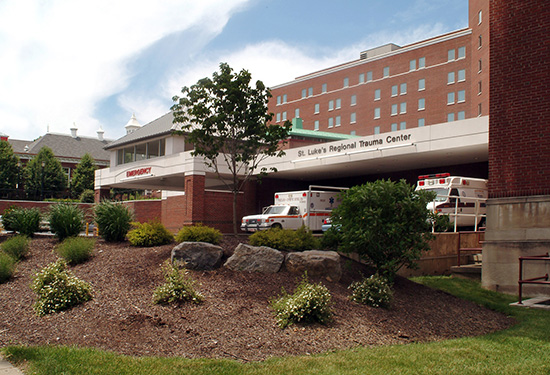
Designated international General Electric Healthcare Show Site for imaging technology
St. Luke’s relationship with GE Healthcare allows the St. Luke’s medical team to be part of the development process from the ground up with GE Healthcare engineers, leading to innovations in radiology.
Miners Memorial Hospital joins St. Luke's
The 62-bed acute care hospital and 48-bed geriatric center in Coaldale, Schuylkill County was struggling financially before it became part of the Network. In less than a year after the affiliation, it began operating in the black.
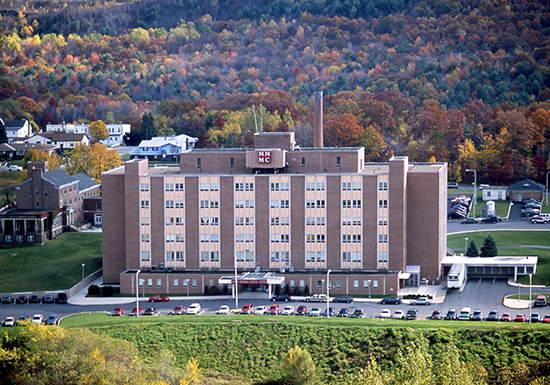
Transforming Medicine.
Reimagining Care.
As the area’s first community hospital, St. Luke’s has been providing cost-effective and high-quality care to patients, regardless of their ability to pay since 1872. Today, St. Luke’s University Health Network is comprised of 15 campuses, 1,900+ physicians and providers, 350+ outpatient sites, the region's first and only medical school campus, the nation’s oldest operating nursing school, and the largest hospital-based EMS service in Pennsylvania.
Allentown Campus First in Region to Have AI-Driven Ethos Cancer Treatment
St. Luke’s Allentown Campus is the first in Pennsylvania, New Jersey and Delaware to acquire the Varian Ethos therapy system, advancing treatment for cancer patients in the Lehigh Valley and surrounding areas. Ethos therapy is an artificial intelligence (AI)-driven holistic solution designed to increase radiotherapy’s capability, flexibility and efficiency.
First Hospital in Pennsylvania to offer robotic surgery
St. Luke's Da Vinci model robot is the first of its kind used in Pennsylvania. The robot, nicknamed "Leo," was made by Intuitive Surgical of California and approved for general use by the U.S. Food and Drug Administration. Advantages the robot offers over small-incision surgery, which is performed with scopes, include its ability to mimic a surgeon's hand movements, provide three-dimensional images and sew inside tight quarters.
St. Luke's Allentown Campus expands Emergency Department
St. Luke’s Allentown Campus completes a $50 million five-story addition that includes a 10,000-square-foot emergency department expansion, five new operating rooms and a 10-bed intensive care unit. Now doubled in size, the emergency department is equipped to handle 60,000 patients annually, including those having a heart attack or stroke.
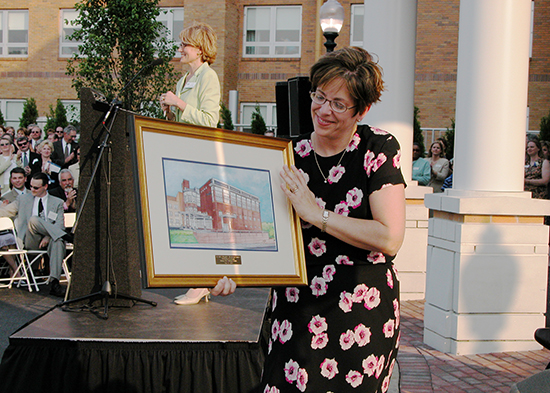
Temple and St. Luke’s open a clinical campus in Bethlehem
The clinical campus opens on the St. Luke’s Bethlehem Campus where students complete their third and fourth years of medical school. In more recent years, students have been in Bethlehem for their second, third and fourth years as part of the medical school regional campus. In the fall of 2022 students will complete all four years of school on the Bethlehem Campus.
St. Luke’s Hospice House opens
The Hospice House, located in Lower Saucon Township, is the only free-standing inpatient facility in the Lehigh Valley. When pain and symptoms become too acute for home hospice care, the Hospice House is available to provide the highest level of acute care. General inpatient care is provided by registered nurses.
St. Luke's Allentown Campus doubles in size
The 213,000-square-foot expansion, which took less than two years to complete, more than doubles the size of the campus at 17th and Hamilton streets. This expansion includes six new intensive care beds, 22 surgical beds, two cardiac catheterization laboratories and a 680-square-foot open heart operating room suite with modern interactive teleconferencing equipment that allow surgeons to teach remotely from the operating room.
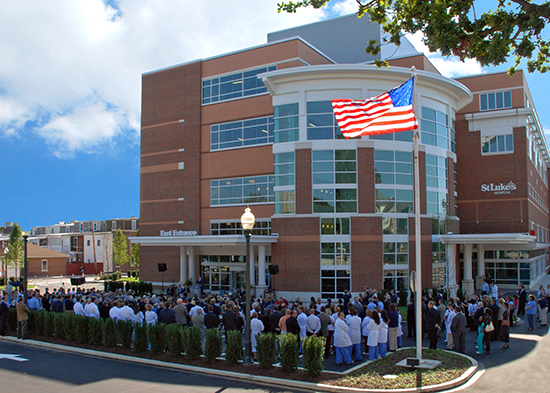
School of Medicine established
Through a partnership with Temple University, St. Luke’s establishes the first and only school of medicine in the greater Lehigh Valley. The Lehigh Valley campus teaches the same curriculum evaluates students using the same exams and other metrics. After graduation, St. Luke's offers ample opportunities to stay local with a myriad of Residency and Fellowship opportunities.
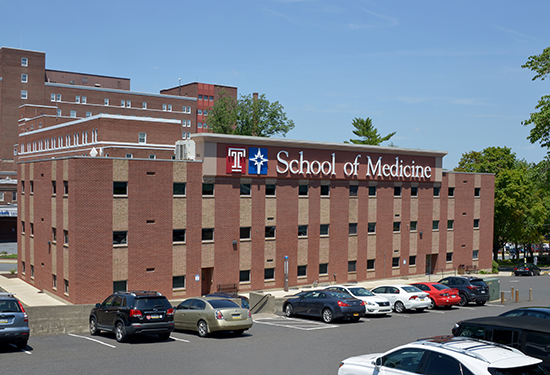
St. Luke's Anderson Campus opens
Located in Easton, this is the first new, full-service, acute-care hospital in Pennsylvania in forty years. It is built on 500 acres of farmland with a state-of-the-art cancer center, a medical office building, specialty and primary care services, equipped with private rooms, beautiful views and plenty of parking.
Warren Hospital (Warren County, NJ) joins Network
Since the hospital joined the Network, St. Luke’s has invested nearly $90 million in patient-friendly upgrades at the hospital’s main campus and satellite locations throughout Warren and Hunterdon counties.
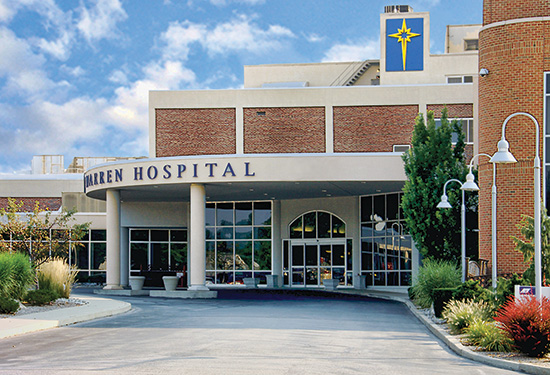
Name changes to St. Luke’s University Health Network
To more accurately reflect its commitment to education, St. Luke’s pursues and earns accreditation from the Pennsylvania Department of Education to be designated a university, based on the volume and breadth of its educational offerings.

GE Discovery IGS 730 Hybrid OR is installed
St. Luke’s becomes the first hospital in the United States to offer this exciting new technology. This interventional suite combines the advanced imaging world and the surgical world in the operating room. The system is completely mobile and can be programmed to move widely within the operating room, giving physicians the ultimate precision and flexibility during even the most complex procedures.
St. Luke's Allentown unveils $9.5M parking deck
St. Luke’s Hospital Allentown Campus opens its new $9.5 million parking deck that will offer patients, visitors and employees easy access to the hospital’s services. Built on top of the former South parking lot and located behind the hospital between St. Cloud and Walnut streets, the deck adds 350 new spaces.
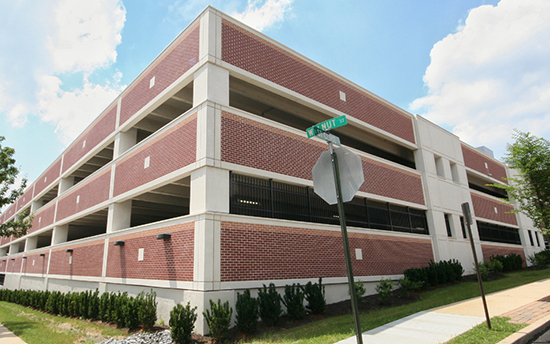
The first graduating class of the Medical School
“I am very pleased to announce that the first class of The Medical School of Temple University/St. Luke’s University Health Network has met these challenges, far exceeded our expectations and have proved themselves ready for the next step of their training in their chosen residency programs.” Joel Rosenfeld, MD, MEd, FACS Chief Academic Officer St. Luke’s University Health Network Senior Associate Dean Temple University School of Medicine
St. Luke’s Monroe Campus opens
Located in Stroudsburg, PA, St. Luke’s Monroe Campus begins seeing patients through its Emergency Department on October 3 making it Monroe County's first new hospital in more than 100 years and providing Monroe County residents with another choice for inpatient health care.
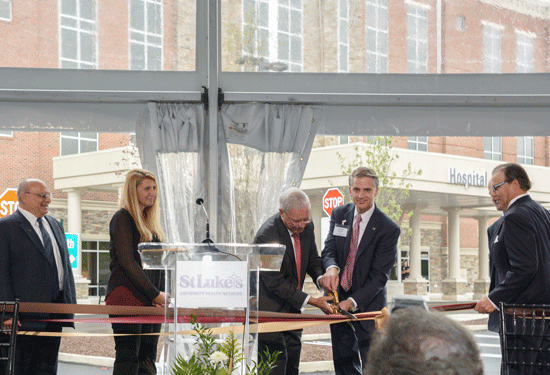
Epic Electronic Medical Record is implemented
St. Luke’s goes live with Epic—a clinical and revenue cycle system—on January 9 at all six hospitals and multiple outpatient departments. With thousands of employees involved in the preparations for the installation, St. Luke’s is now one of the largest organizations in the country to deploy Epic across all of its hospitals at once while handling a patient capacity increase during the go-live phase.
St. Luke’s Eliminates Brain Tumors with Breakthrough Laser Treatment
St. Luke’s University Health Network is the first in the region to offer a new laser procedure that uses minimally invasive MRI-guided laser technology to target and destroy cancerous brain tumors. Visualase®, an MRI-guided laser ablation system by Medtronic, enables neurosurgeons to deliver laser energy through a hole with a diameter approximately the size of a coffee stirrer. The precision of the technology, also known as laser interstitial thermal therapy (LITT), allows the laser to destroy the tumor while minimizing harm to surrounding tissue.
St. Luke's is a GE Healthcare National Show Site for women's imaging
St. Luke’s offers the newest advances in breast imaging, thanks to a nearly three-decade relationship with GE Healthcare. Only a handful of locations nationwide provide low-dose 3D mammography and SensorySuite together.
St. Luke's implants the world's first MRI-compatible neurostimulator system
Steven Falowski, MD, Chief of Functional Neurosurgery at St. Luke’s University Health Network is the first surgeon in the world to implant Medtronic’s brand new, full-body, MRI-compatible paddle electrode leads for the Restore® neurostimulator system. The surgery is performed at St. Luke’s Quakertown Hospital.
St. Luke’s Anderson Campus expands
The new, $26-million Specialty Pavilion expands the breadth of offerings at the St. Luke’s Anderson Campus to include ambulatory surgery, urology, OB/GYN, gastroenterology and laboratory services. The three-floor, 75,000-square-foot building is located at 2200 St. Luke’s Boulevard in Easton, and will house 200 employees when all areas are open.
St. Luke’s and Geisinger sign air medical collaboration agreement
St. Luke’s University Health Network and Geisinger announce the signing of an air medical collaboration agreement for Geisinger’s Life Flight program to provide air medical services for St. Luke’s beginning on July 1, 2018.
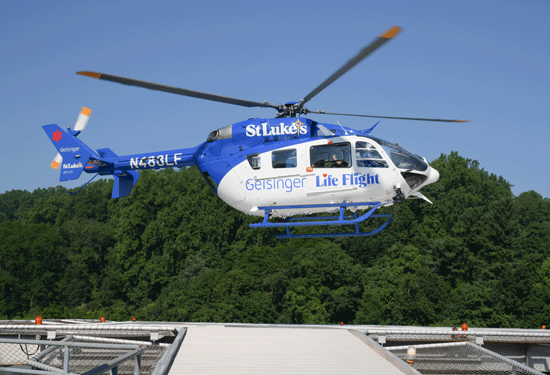
St. Luke’s first in the region with a revolutionary procedure to relieve chronic pain
Performed in an outpatient setting, Dorsal Root Ganglion (DRG) stimulation targets the exact bundle of sensory nerve cell bodies to relieve pain where it occurs. Functional neurosurgeon Steven Falowski, MD, and pain specialist Farooq A. Qureshi, MD, of St. Luke’s Spine & Pain Associates, are among the first doctors in the United States to receive special training in the procedure.
Nation’s oldest Nursing School at St. Luke’s graduates 150th class
The graduating cohort is comprised of 65 students, compared to three when the school was founded in 1884. (The first class graduated in 1886, and during some years since then more than one class has graduated). St. Luke’s has the highest-ranked nursing program in the Lehigh Valley, according to the website RegisteredNursing.org. It is 5th out of 76 programs in Pennsylvania, based on graduates’ performance on the National Council Licensure Examination- Registered Nurse (NCLEX-RN) board exam.
Sacred Heart HealthCare System joins St. Luke’s University Health Network
On March 1, Sacred Heart becomes a member of St. Luke’s University Health Network. The addition of Sacred Heart further positions the Network to continue as the Lehigh Valley’s leading provider of the highest quality care at the lowest cost. Together, we will work closely with our newest partners at Sacred Heart to expand access to quality health care services.

Blue Mountain Health System joins St. Luke’s University Health Network
With final approval of federal and state regulatory bodies received on December 21, St. Luke’s University Health Network and Blue Mountain Health System has officially completed their previously announced merger. Blue Mountain’s two Carbon County hospitals and other entities have united with Bethlehem, PA.-based St. Luke’s, effective December 31, to enhance the health care and quality of life of Carbon County residents.

Geisinger St. Luke’s Hospital opens
Geisinger St. Luke’s Hospital officially opened its doors, signaling the next chapter of compassionate, patient-centered health care in Schuylkill County. As the first hospital to open in the county in more than 90 years, Geisinger St. Luke’s Hospital makes health care easier for area residents by bringing new services closer to home.
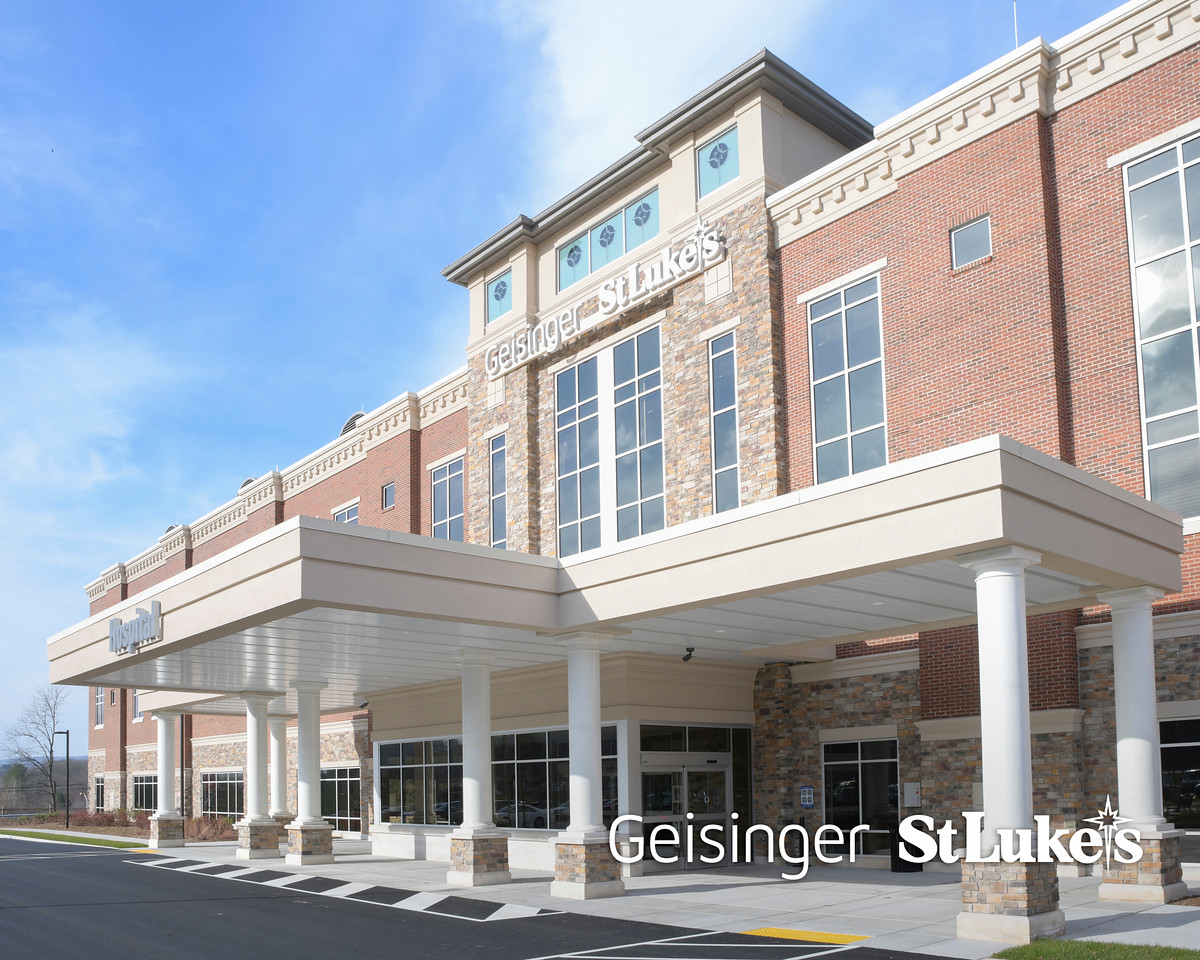
First in the region to offer a robotic procedure for GERD
St. Luke’s is the first provider in the Lehigh Valley region to offer a minimally invasive robotic surgery to place a LINX device in patients suffering from gastroesophageal reflux disease (GERD) and repair associated hiatal hernias.
St. Luke's pioneers continuous vital signs monitoring
St. Luke’s has deployed a groundbreaking patient safety program that harnesses the latest in healthcare technology, revolutionizing the surveillance of hospital patients’ vital signs. The program’s 24/7 monitoring alerts clinicians to patient deterioration. St. Luke’s is pioneering this approach nationally. No other hospital in the region and only a handful across the country has such monitoring on their medical surgical units. The technology, developed by Masimo Corp., has been shown through clinical trials to decrease mortality, intensive care unit readmission and rapid response calls.
St. Luke’s Upper Bucks Campus opens
Bucks County’s newest hospital, St. Luke’s Upper Bucks Campus, officially opens its doors on December 14. Construction of the $100 million campus that features a family-friendly, 80-bed hospital and a state-of-the-art emergency department began May 2018.
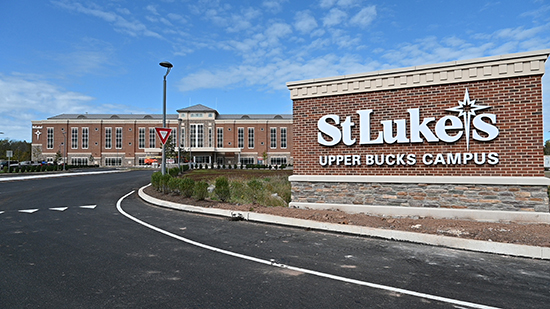
Temple/St. Luke’s is the only 4-Year Medical School in the Lehigh Valley
“We wanted to expand and be able to do more because of the physician shortage that is widely projected,” says Joel Rosenfeld, MD, MEd, FACS, Chief Academic Officer, St. Luke’s University Health Network and Senior Associate Dean, Temple University School of Medicine. “The partnership has proved beneficial to students and the Lehigh Valley community. Each year, many of the graduates continue with residencies in the St. Luke’s Network and join St. Luke’s medical staff as attendings when they complete their studies.”
St. Luke’s University Health Network acquires Easton Hospital
Easton Hospital is now known as St. Luke's Easton Campus. This acquisition preserves the 125-year-old hospital for future generations, ensuring future jobs and bringing St. Luke’s world-class health care to the citizens of the greater Easton-area community.
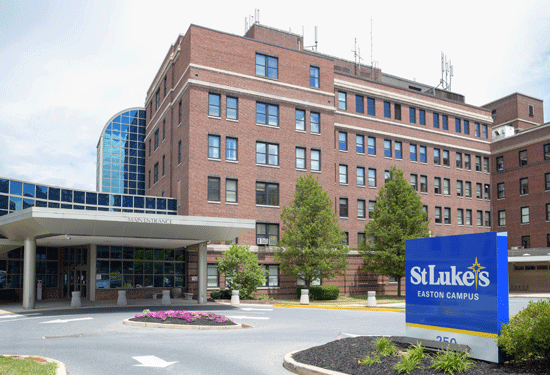
Pediatric Intensive Care Unit (PICU) opens
This new PICU, located at the Bethlehem campus, is part of a significant expansion dedicated to improving pediatric health care within the region and providing advanced care to critically ill children close to home. In addition to adding pediatric critical care specialists, the expansion includes several new pediatric sub-specialists and primary care physicians.
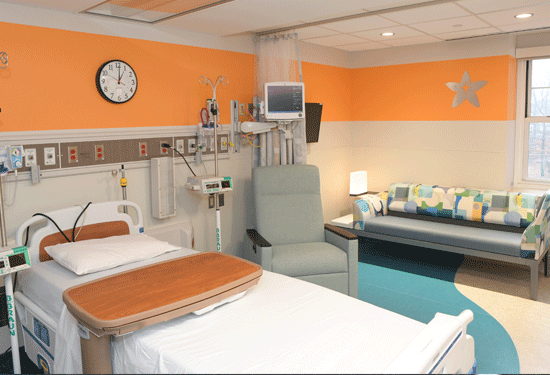
Treatment to help failing hearts ‘Squeeze’
St. Luke’s is the first hospital in northeastern Pennsylvania -- and one of the first in the country -- to provide this innovative, first-of-its kind treatment for debilitating heart failure. The Optimizer system is a new pacemaker-like device that prompts the heart muscle to contract more strongly with each beat.
Remote patient monitoring for COVID-19 patients
St. Luke’s is one of the first institutions worldwide to use Masimo SafetyNet™ to monitor in-hospital patients, as the network seeks innovative solutions to care for the surge of patients infected by COVID-19. Masimo SafetyNet is an innovative, economically scalable cloud-based patient management platform designed to help clinicians care for patients remotely in hospital settings and in non-traditional settings and circumstances.
New Women and Babies Pavilion opens at Anderson Campus
The Women & Babies Pavilion expansion doubles the size of the existing hospital on the 500-acre Anderson Campus just off Route 33. The new facility includes a labor and delivery unit, adding to the Network’s existing labor and delivery units in Allentown and Bethlehem.
Named #1 Major Teaching Hospital in the Country
In addition to the 15 Top Health Systems recognition, individual St. Luke’s campuses win IBM Watson Health 100 Top Hospital awards for the ninth time. St. Luke’s University Hospital, Bethlehem and Allentown campuses, win for the seventh time in a row and the ninth time overall in the Major Teaching Hospital category. St. Luke's University Hospital is ranked #1 in the country in the major teaching hospital category.
GammaTile® Therapy offered
After St. Luke’s Neurosurgeon Evan Marlin, MD, surgically removed his patient’s brain tumor, he made Pennsylvania medical history by placing five small collagen sponges, embedded with radioactive seeds, into the space once occupied by the tumor. The radiation emitted from the one-inch square GammaTile® disrupts the tumor cell replication process so that the cell is unable to replicate and eventually dies. St. Luke’s is the first health care organization in Pennsylvania to use this novel radiation treatment.
Next-generation robotic technology is offered
Orthopedic surgeons at St. Luke’s are the first in PA and NJ to offer knee replacement procedures using the new VELYS Robotic-Assisted Solution, a next-generation robotic technology that uses data tailored to each patient’s anatomy.
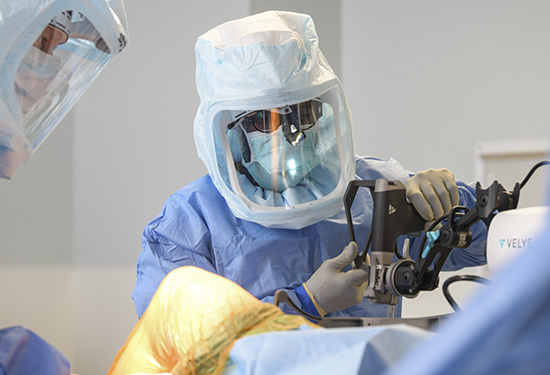
St. Luke’s Carbon Campus opens
The new three-story, 80-patient-room, 160,000 square-feet facility is the largest of its kind in the history of Carbon County and the first new hospital built in the county in 65 years. It is the centerpiece of the network’s new 108-acre technologically advanced, multipurpose, rural medical and wellness complex in Lehighton, PA. It will redefine healthcare access, convenience and quality for the local population and surrounding areas.
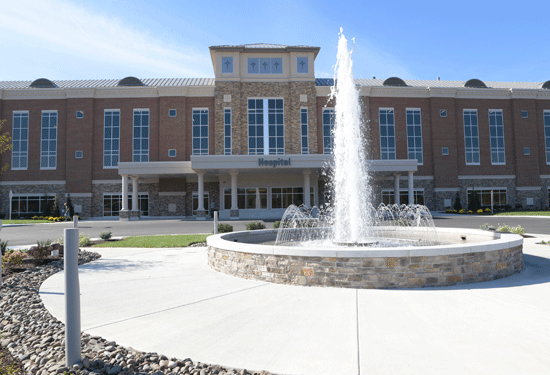
Penn Foundation joins St. Luke’s
The merger in July 2021 creates the largest, fully-integrated network of behavioral health services in Eastern Pennsylvania and New Jersey dedicated to meeting the needs of individuals and families in the communities we serve.

Designated as the largest trauma network in Pennsylvania
Effective November 1—after a lengthy and in-depth review, to ensure timely and appropriate care for the trauma patient is provided—St. Luke’s University Health Network operates seven trauma centers in central eastern Pennsylvania, making it the largest network of trauma centers in Pennsylvania.
Adolescent Behavioral Unit opens
St. Luke’s opens its new Adolescent Behavioral Health Unit to provide safe, expert, and compassionate care to children and adolescents experiencing serious mental, emotional or behavioral symptoms. The Adolescent Behavioral Health Unit is located at St. Luke’s Easton Campus, on the hospital’s third floor.
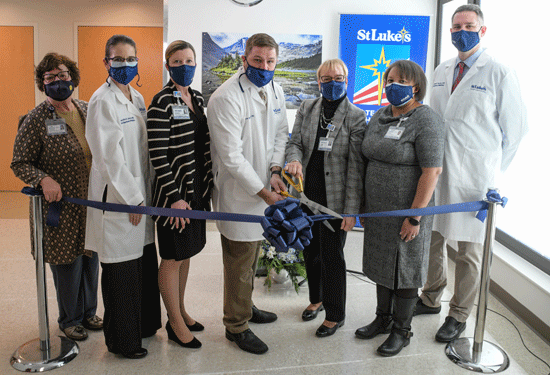
School of Phlebotomy opens
St. Luke’s opens its School of Phlebotomy in January to develop highly-skilled, patient-focused phlebotomists seeking a rewarding career through the combined delivery of didactic/theory in a classroom setting, as well as clinical experience in our outpatient lab patient service centers.
St. Luke’s joins National Network of Children's Hospitals
St. Luke’s University Health Network is pleased to announce it is now a proud member of the Children’s Hospital Association (CHA). As champions for children’s health, the Network will collaborate through the association to advance innovation in the quality, cost and delivery of care – better serving all children. Membership in CHA represents St. Luke’s ongoing commitment to improving the health of children and improving the quality, safety and cost of pediatric health care.
St. Luke’s ranked 16th for Charitable Giving Nationally
St. Luke’s University Health Network is the only health care system in Pennsylvania on the Lown Institute’s top-25 list of health care systems with “fair share” surpluses. St. Luke’s, whose surplus was ranked at No. 16 in the nation, is the only health system in the Lehigh Valley with a surplus, meaning it spends more on charity and community investment than it receives in tax breaks.
Pediatric Specialty Center opens
St. Luke’s University Health Network is proud to open the region’s first and only free-standing facility dedicated entirely to kids. This new 37,500-square-foot Pediatric Specialty Center is located in Center Valley, PA.
First in region to implement new type of pacemaker
St. Luke’s cardiologist and electrophysiologist Darren Traub, DO, makes medical history with the implementation of the first new leadless and retrievable pacemaker into a patient at St. Luke’s Bethlehem Campus. This treatment innovation is just one of the reasons St. Luke’s is recognized as one of the top 50 cardiovascular hospitals in the country.
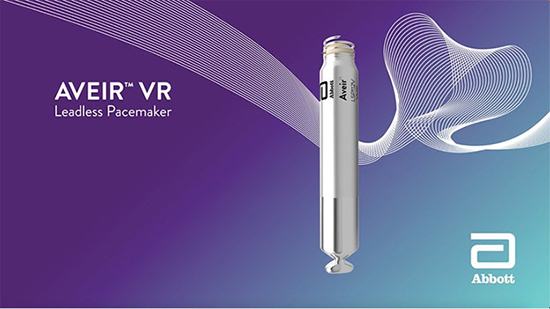
New Emergency Room opens
St. Luke’s Allentown officials opened its expanded and renovated emergency room to meet the community’s growing need for urgent care at the hospital at Hamilton and 17th streets. The 20,000 square-foot expansion of the ER, costing $6.3 million, adds 14 more private treatment areas to support the rapidly growing department. Advanced LifeAire technology will purify the air and create negative air flow, adding yet another measure of safety from infections for patients, visitors and caregivers, a first in any hospital ER in Pennsylvania.
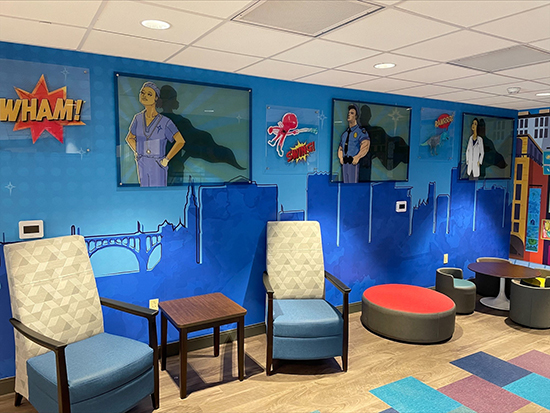
St. Luke's break ground on new building for Monroe Campus
St. Luke’s University Health Network officially broke ground on its new four-story, 165,000-square-foot patient care building at its Monroe Campus. A ceremony to mark the start of the historic expansion was held at the site. The addition will double the size of the existing hospital. The new patient care tower – which is expected to open in early 2024 – will be built on the east side of the St. Luke’s Monroe Campus. It will house a general medical-surgical unit with 36 beds, additional operating and procedure space, expanded outpatient programs and a state-of-the-art interventional radiology suite as well as shell space for future development.
First One-Stop Clinic for Breast in the Nation
In partnership with PINC AI™ Applied Sciences and GE Healthcare, St. Luke’s has implemented the first One-Stop Clinic™ in the United States – serving as a national model for how to help accelerate breast cancer care through a multi-modality approach.
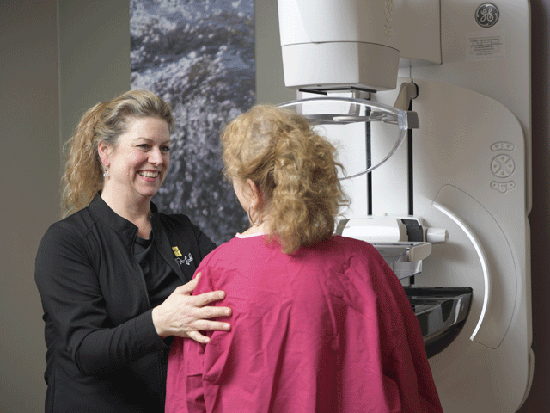
Carbon Campus Expands Emergency Department
St. Luke’s Carbon Campus has completed an expansion that has added more beds to its Emergency Department (ED) to meet the high demand for quality emergency services from area residents. The largest acute-care hospital in Carbon County now has a total of 30 rooms in its ED.
Allentown Campus Breaks Ground for Women & Babies Pavilion
Construction starts on the new Women & Babies Pavilion, which will increase the community’s access to high-quality birthing, post-partum and newborn services, including neonatal intensive care. The five-story, 85,000 square-foot, tower is being built on the east side of the current hospital to meet the growing patient needs for these services at this hospital campus.
The expanded services, double the size of the current units, will be able to accommodate as many as 3,000 patients per year. The project will cost approximately $50 million and is scheduled for completion in early 2024.
First in Nation to Make Custom Casts through 3D Printing on Site
St. Luke’s becomes the first in the nation to use its in-house 3D Print and Innovation Lab to produce ActivArmor casts for upper extremity injuries. These removable, waterproof and durable 3-dimensional plastic casts have been employed at St. Luke’s Orthopedic Care for more than a year.
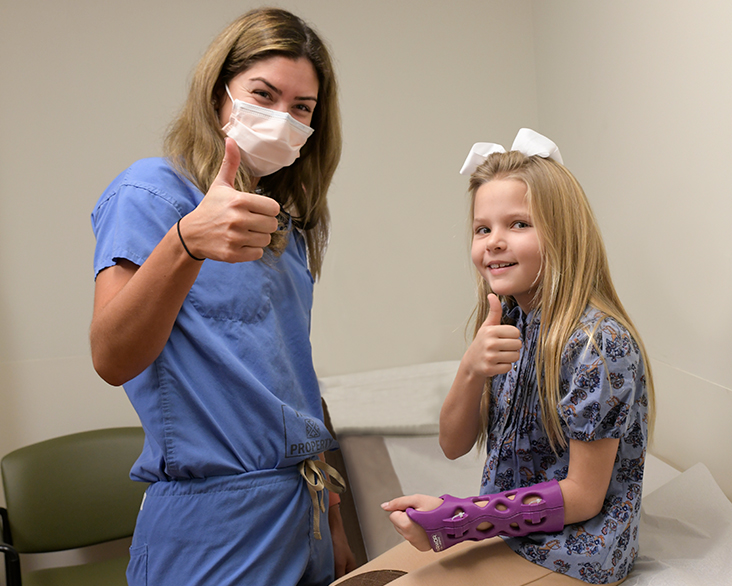
First Pulmonary Hypertension Program in Region
St. Luke’s Heart & Vascular Center opens the area’s first and only Pulmonary Hypertension (PH) Program, whose mission is to provide patients with expert and personal diagnosis, treatment, education and support for this serious medical condition involving the heart and lungs.
Nurse Honor Guard Formed Network-Wide
St. Luke’s becomes the first in the Lehigh Valley to offer Honor Presentations at funerals or memorial services to recognize the quiet heroism of nurses.
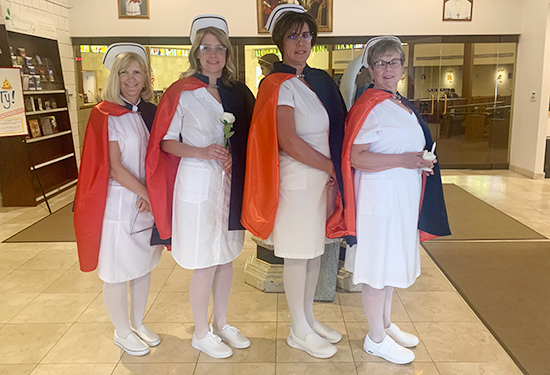
Surgical Skills Labs the Only Designated Testing Centers in Region
St. Luke’s Joel C. Rosenfeld, MD, Surgical Skills Lab at St. Luke’s Bethlehem Campus and the Surgical Skills Lab at Easton Campus are designated the region’s only testing centers for laparoscopic and endoscopic surgical skills as well as the safe use of surgical energy.
New Pediatric Specialty Labs
St. Luke’s opens six Pediatric Specialty Labs becoming the first in the region to provide this service. The Pediatric Specialty Labs are designed to make children and their parents feel more comfortable and less stressed when needing bloodwork.

Only Lehigh Valley Network to Win Prestigious Statewide Achievement Award
St. Luke’s receives a prestigious Achievement Award from The Hospital and Healthsystem Association of Pennsylvania (HAP) for developing and utilizing an innovative approach to reducing hospital readmissions for behavioral health issues.
New School of Sterile Processing
St. Luke’s is the first in the region to launch its new School of Sterile Processing, which will train students on how to clean, sterilize, prepare, process and store all medical and surgical supplies and equipment used for patient care.
1st in Region to Deploy Artificial Intelligence to Detect Colon Cancer
St. Luke’s enhanced its capacity to detect colorectal cancer through the acquisition of the GI Genius endoscopy module – the first-to-market, computer-aided polyp detection system powered by artificial intelligence.
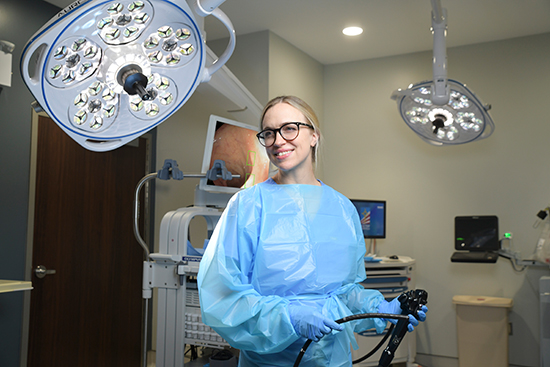
SLUHN Heart Specialists Introduce Newest Non-Surgical Heart Valve to Region
A St. Luke’s Heart & Vascular Center team made regional medical history when it was first in the area to implant the newest generation of non-surgical aortic heart valves in a patient at St. Luke’s Bethlehem Campus during a procedure that lasted less than 20 minutes. This advance is further evidence of St. Luke’s dominant role as the area’s heart care leader.
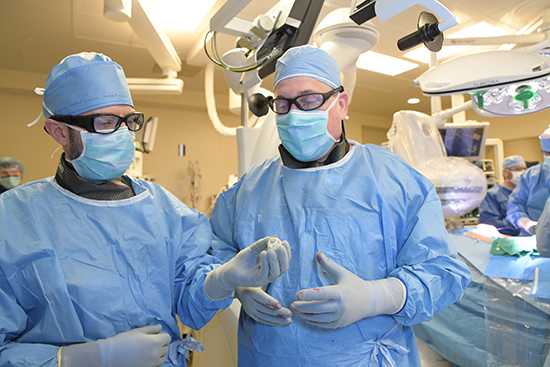
St. Luke’s Announces Establishment of New Children’s Hospital
"St. Luke’s is the first established hospital in the Lehigh Valley and has been caring for children for the 150 years since its founding in 1872,” St. Luke’s President & CEO Richard A. Anderson said. “This new children’s hospital designation recognizes the incredible depth of pediatric expertise developed across our Network over its long and storied history, including an array of specialty services added in recent years."
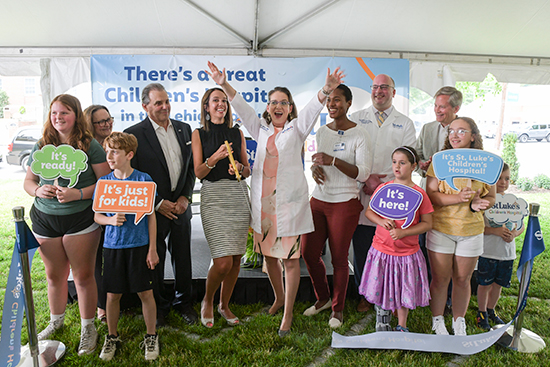
GSL Hospital Is First on East Coast to Offer Siemens ARTIS Angiography System
Geisinger St. Luke’s (GSL) Hospital is the second hospital nationwide to offer Siemens’ latest, most technologically advanced angiography system. The new ARTIS system will allow Geisinger St. Luke’s providers to better diagnose and treat a range of fairly common health conditions, such as blocked arteries, internal bleeding, blood clots, bile duct and ureteral blockages, using non-surgical interventions.
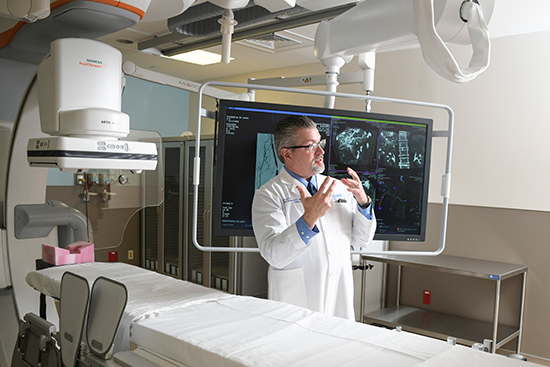
St. Luke’s and Helix Partner on Population Genomics Research Program
St. Luke’s and Helix, Inc. of San Mateo, Calif., a leader in population genomics, are joining forces to offer precision medicine opportunities to patients in Pennsylvania and New Jersey through a new community health research program.
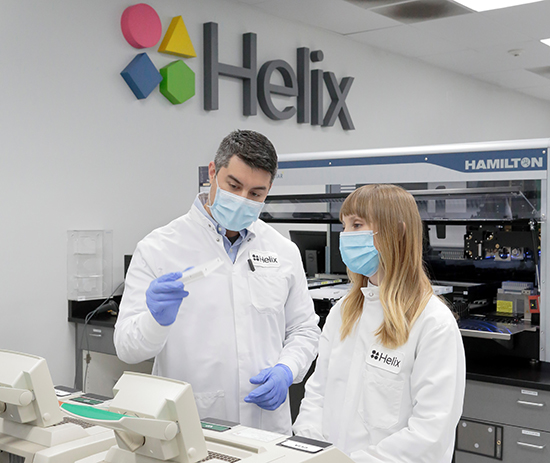
First Fully Spanish-Speaking Practice
St. Luke’s University Health Network (SLUHN) has opened its first fully Spanish-speaking practice in the Lehigh Valley. Located at 451 West Chew Street, Suite 400 in Allentown, OB/GYN Care Associates of St. Luke’s-Center City Allentown will be open Monday through Friday, from 8 am to 4:30 pm.
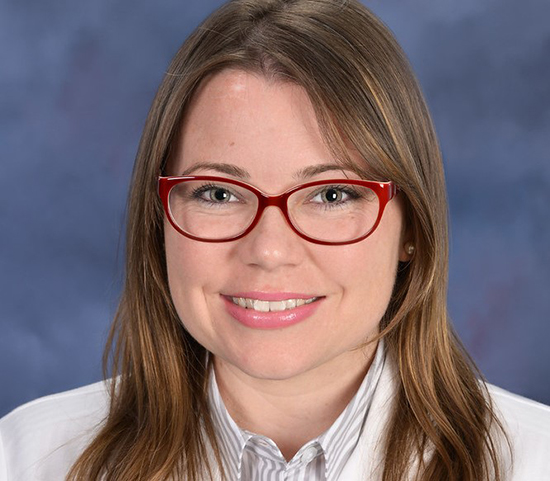
New Isaacman Family Children's Emergency Room
St. Luke’s announces the opening of the new Isaacman Family Children’s Emergency Room at St. Luke’s Children’s Hospital in Bethlehem, Pa. The Isaacman Family Children’s ER is supported by an array of pediatric specialists, including board-certified pediatric emergency medicine physicians, and equipped with a range of special diagnostic and therapeutic tools to meet the unique needs of children.
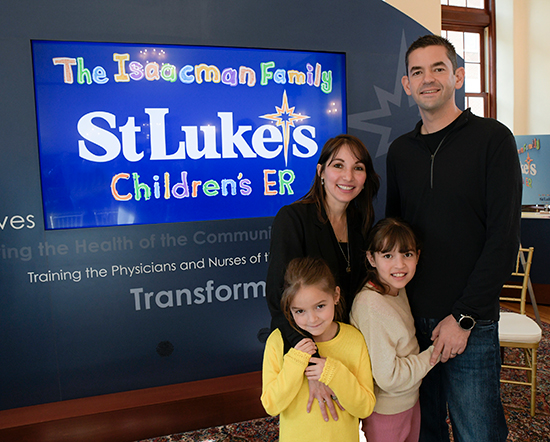
New Orthopedic Hospital Opens
St. Luke’s opens the area’s newest specialty hospital for orthopedic surgery, where expert teams will perform same-day surgeries of the knee, hip, spine, hand and shoulder, and treat a myriad of sports-related fractures and other injuries. St. Luke’s Orthopedic Hospital, built with American steel, is a two-story, 52,000 square-foot facility located at the St. Luke’s West End Campus, 501 Cetronia Rd., Allentown, in western Lehigh County.
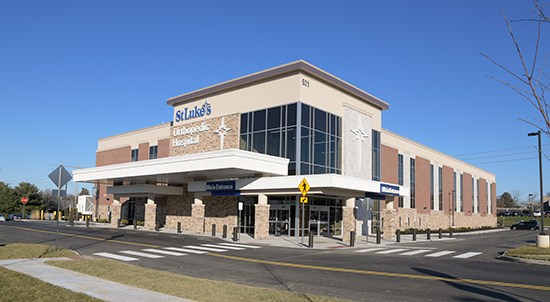
Allentown Campus Opens New Women & Babies Pavilion
A mother who gave birth to her first child at St. Luke’s Allentown Campus cut a ceremonial ribbon to open its new Women & Babies Pavilion. This expanded facility will increase the community’s access to high-quality birthing, post-partum and newborn services, including neonatal intensive care. The five-story, 85,000 square-foot tower, built onto the east side of the hospital, will meet the growing patient needs for these services at this campus.
St. Luke’s Hires 20,000th Employee
When Caitlin Kolba reported for her first day of work at St. Luke’s University Health Network this week, she became the Network’s 20,000th employee – the personification of St. Luke’s remarkable transformation into the Lehigh Valley’s largest and most recognized health system.
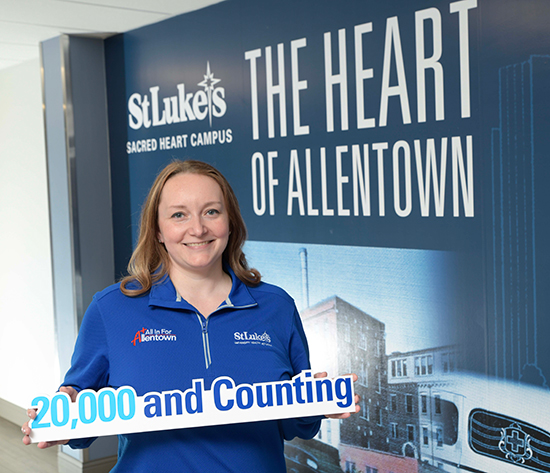
St. Luke’s Achieves 1,000 Procedures Utilizing Robotic-Assisted Technology in Total Knee Replacement
St. Luke’s orthopedic surgeons have completed 1,000 knee replacement procedures utilizing the VELYS™ Robotic-Assisted Solution and the ATTUNE™ Knee System. This achievement is a testament to St. Luke’s commitment to providing advanced technology and exceptional care to our patients.
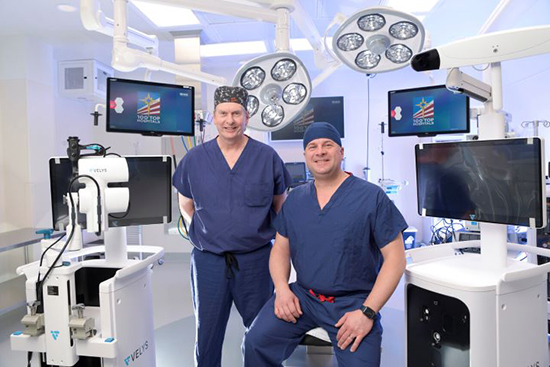
10th Anniversary of SLIMP Medical Mission Trips Abroad
April 2024 marks the 10-year-anniversary of the St. Luke’s International Medicine Program (SLIMP), a non-profit, physician-driven project that provides free medical care, physician training and supplies to struggling countries across the globe.
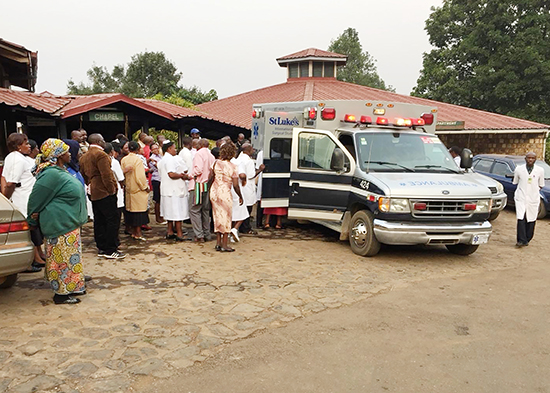
First to Offer New Pulsed Field Ablation for Atrial Fibrillation
St. Luke’s Cardiac Electrophysiology team is first in the Lehigh Valley and Northeastern Pennsylvania to offer Pulsed Field Ablation (PFA), a new and improved treatment for atrial fibrillation (afib). This procedure is faster, safer and at least as effective than the conventional methods of ablation, which use radiofrequency and cryotherapy (cold temperatures) to remove problematic heart cells. The first PFA cases in the Lehigh Valley and Northeastern Pennsylvania were performed on May 6 at the St. Luke’s University Hospital- Bethlehem.
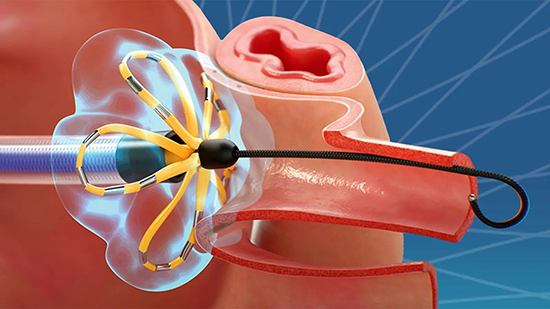
New Incisionless Bypass Treatment for Blocked Leg Arteries
St. Luke’s vascular surgeons are the first in the area to offer a new, incisionless procedure that restores blood supply to the leg by bypassing long, chronic total blockages in the main blood vessel of the leg called the superficial femoral artery.
First of its Kind EMS Physician Response Team
St. Luke’s mobile EMS Response Team is the first one of its kind in the Lehigh Valley area using a specialized vehicle, like a mini-ER on wheels, which is a key component of a new partnership between St. Luke’s Emergency Medicine Department and Northampton County, aimed at saving more lives at on-scene accidents and incidents in Bethlehem.
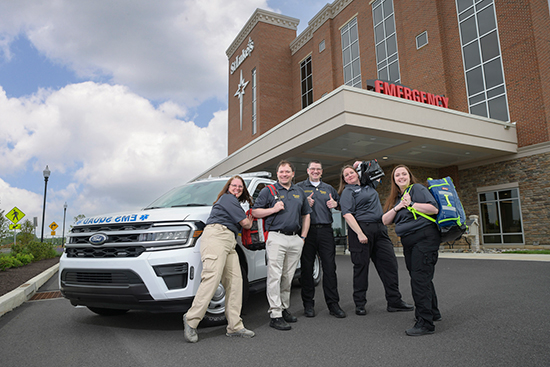
Larger Cardiovascular Unit at Bethlehem Campus
St. Luke’s opened a new, larger Cardiovascular Unit at its Bethlehem Campus for the care of patients recovering from heart surgery. The new Cardiovascular Unit contains 12 critical care beds, twice as many as the prior unit on the fourth floor. Patients on this new unit are prepped for and recover from coronary bypass, heart valve and aneurysm surgeries, receiving all necessary pre- and post-surgical care there until discharge.
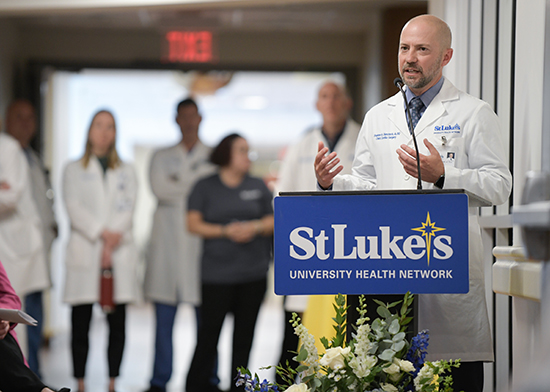
Promising Research to Stabilize Growth of Abdominal Aortic Aneurysms
St. Luke's Vascular Surgeons were the first in the Northeast to enroll a patient in a research study that could revolutionize the care of patients with small to medium-sized abdominal aortic aneurysms (AAA). Every year, over 200,000 people in the U.S. are diagnosed with an abdominal aortic aneurysm.
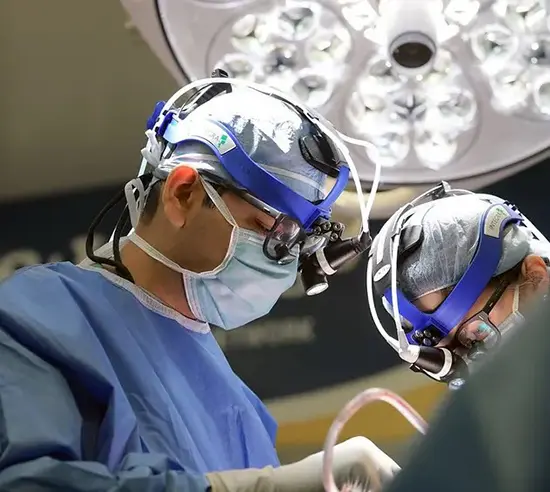
Center for Hope and Healing Opens at Upper Bucks Campus
St. Luke's Cancer Center unveiled its new Center for Hope & Healing at the St. Luke’s Upper Bucks Campus– the only facility of its kind in Bucks County and the greater Lehigh Valley area. The center will use an integrative, patient-centric approach to support patients, families and the community, providing space to the Mastectomy bra boutique, American Hairlines and LuxCare Clothing.
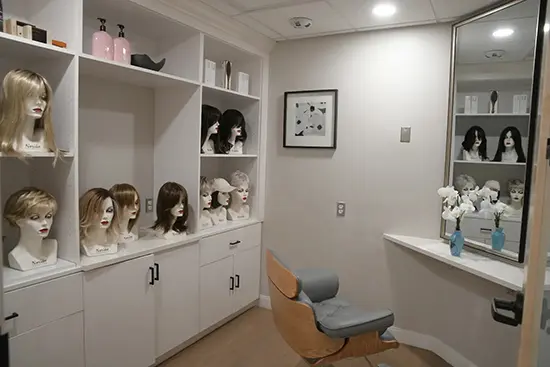
First in the Lehigh Valley to Offer Novel Non-Invasive Test for Heart Disease
St. Luke’s University Health Network now offers a proven, non-invasive diagnostic option for people with suspected heart disease: Heartflow FFR-CT Analysis. This test may reduce the need for invasive cardiac testing and is offered hospitals throughout the Network. Heart disease is the leading cause of death for adults in the United States, and coronary artery disease (CAD) is the most common type of heart disease, affecting nearly half the adult population.
First in Region to Provide Novel Treatment for Avoiding Lower-Extremity Amputations
St. Luke’s physicians are offering a new minimally invasive procedure that offers hope to persons facing likely amputation of a lower extremity due to a permanently blocked artery, called chronic limb-threatening ischemia (CLTI). St. Luke’s Vascular Surgeon Jared Feyko, DO, became the first physician in the region to treat a patient with the LimFlow minimally invasive system to improve the blood supply to a patient’s lower extremity.
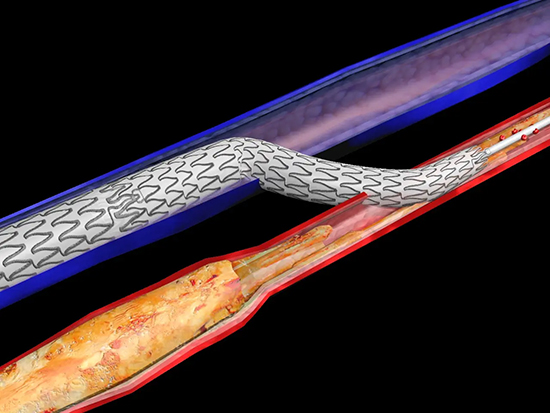
Pioneering AI-Enhanced Screening Technology for Early Diagnosis of Heart Disorders
St. Luke’s heart specialists are first in the Lehigh Valley region to employ advanced artificial intelligence technology, combined with echocardiograms, to detect and monitor potentially serious heart conditions, like aortic stenosis, before symptoms appear in patients.
The Network’s Heart and Vascular Center has begun using the Egnite CardioCare AI digital health platform, which functions with the hospital’s electronic health record (EHR) and echocardiogram images to aid in the diagnosis of various heart issues in the early stages of development.
Grand View Health Joins St. Luke’s University Health Network
As of July 1st, Grand View Health has joined St. Luke’s University Health Network, having received all necessary federal and state regulatory approvals. Grand View Hospital in Sellersville is St. Luke’s 16th campus, increasing its presence in Bucks and Montgomery counties.
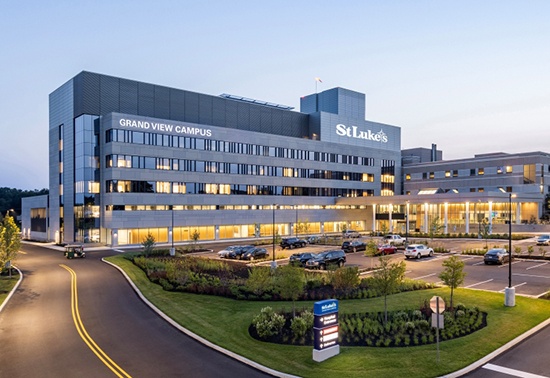
First in Region to Use AI for X-Rays at All Emergency Rooms
St. Luke’s has adopted new AI technology to assist in the review of emergency department (ER) X-ray images to identify bone trauma such as fractures, dislocations, effusions and lesions. The Network is the first in the region to deploy the new diagnostic tool – Gleamer BoneView AI – at all of its acute care hospital ERs and Care Now walk-in urgent care centers.
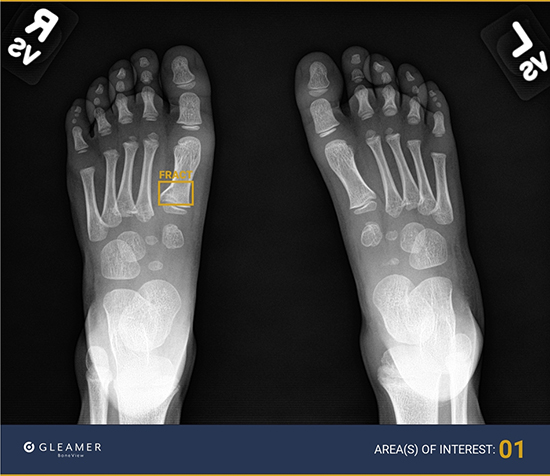
St. Luke’s Identified as an Exemplar in Safety by the Agency for Healthcare Research and Quality
The federal Agency for Healthcare Research and Quality has recognized St. Luke’s alongside national heavyweights Houston Methodist and the Mayo Clinic as the nation’s three high performing health systems for safety and quality—further affirmation of St. Luke’s status as a top leader among the largest and best-known health care providers in the country.
Expanded ER at Upper Bucks Campus
St. Luke’s has doubled the size of its emergency department at its Upper Bucks Campus hospital. The new $8 million, 11,000 square-foot expansion adds 12 new patient treatment bays, bringing the total to 28 individual emergency rooms.
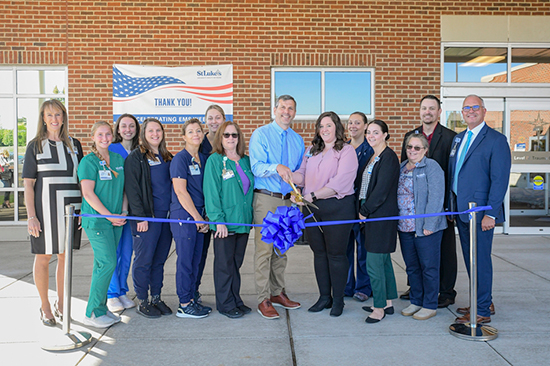
Safest Hospital System in Pennsylvania
Six St. Luke’s University Health Network hospitals – the most of any health network in the state – were honored by the Hospital and Healthcare Association of Pennsylvania (HAP) for exemplary results in delivering safe patient care.
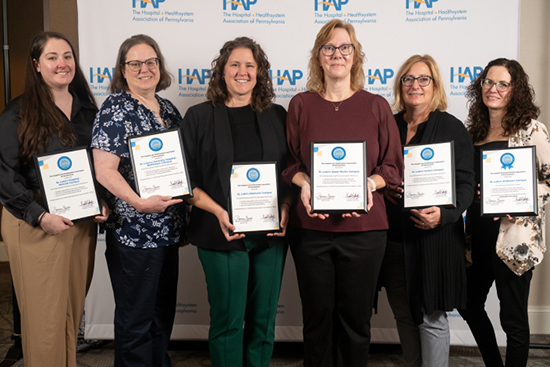
Only Pediatric Rheumatology Practice in the Region
St. Luke’s Pediatric Rheumatology is the only pediatric rheumatology practice in the region. Led by pediatric rheumatologist Dana Toib, MD, St. Luke’s Pediatric Rheumatology plays a vital role in serving children with inflammatory and autoimmune disorders.